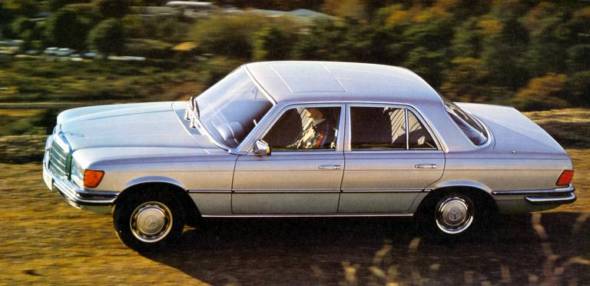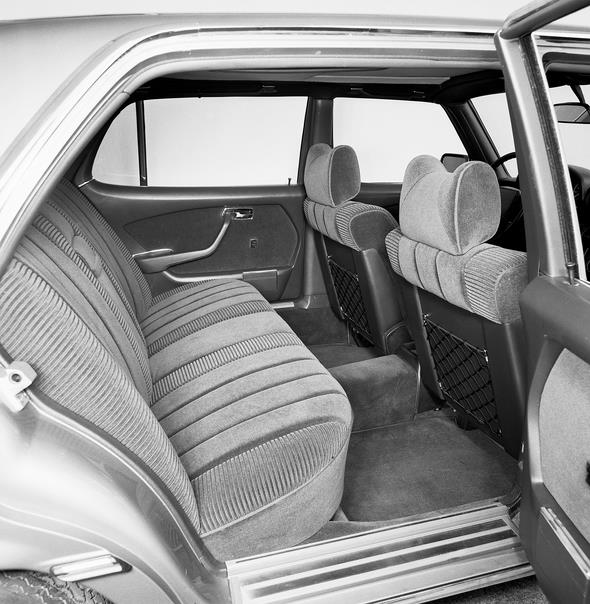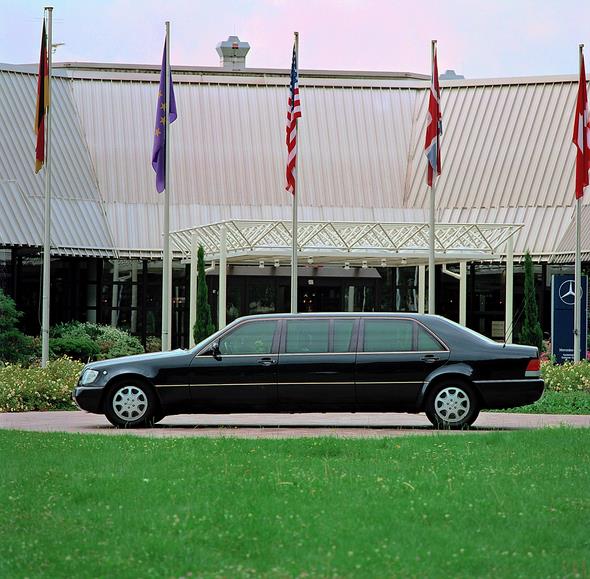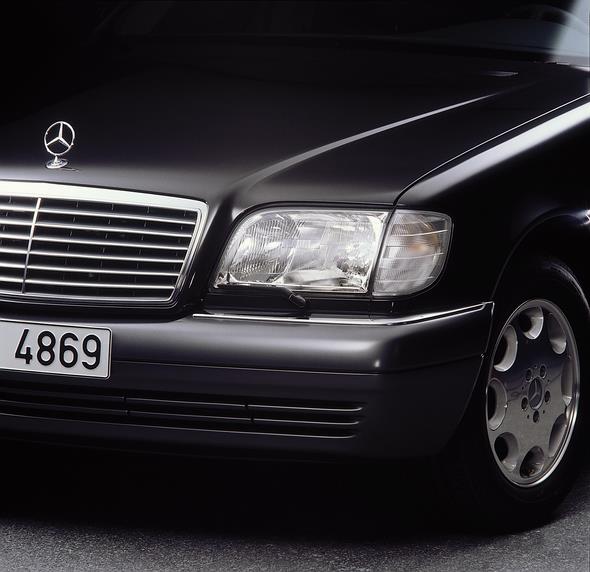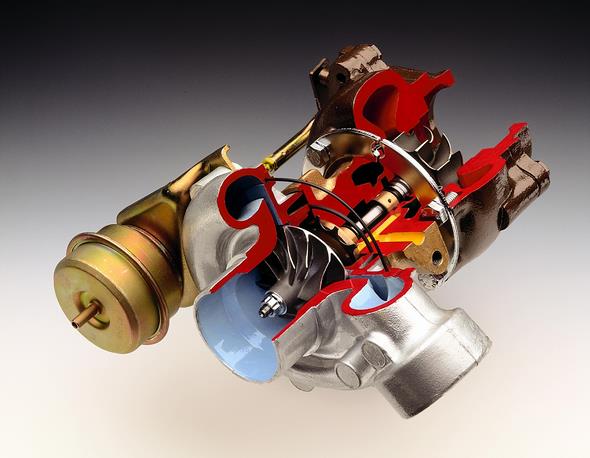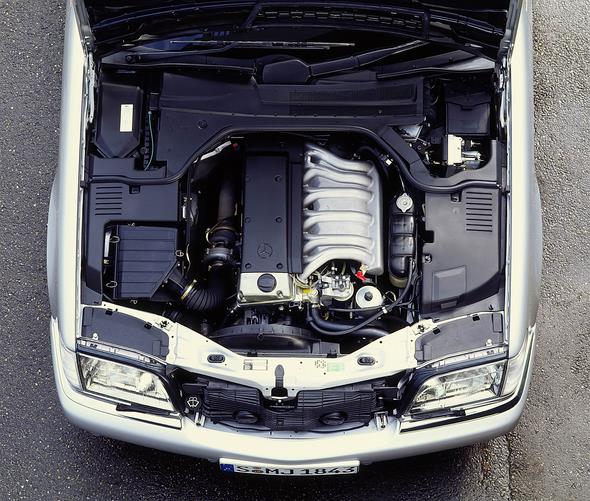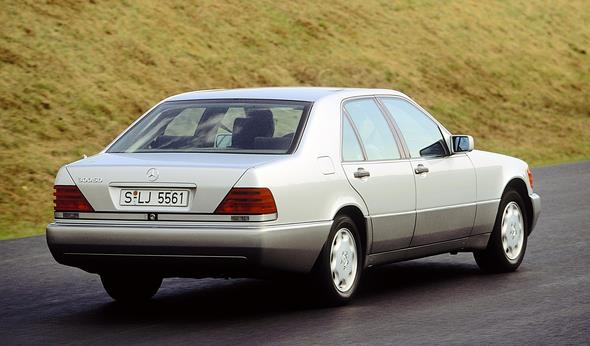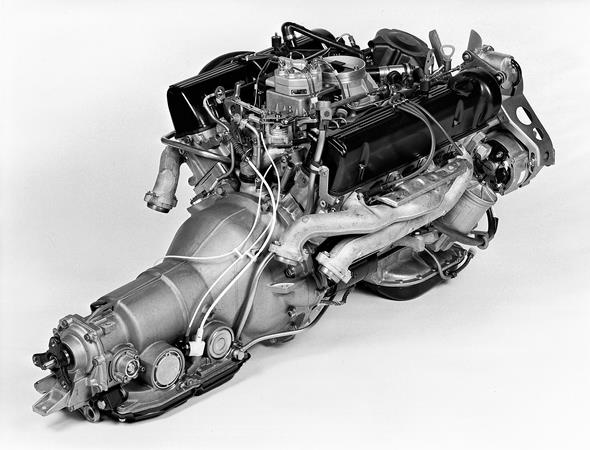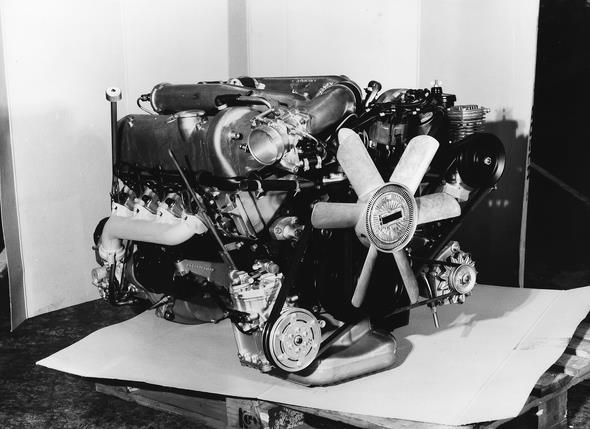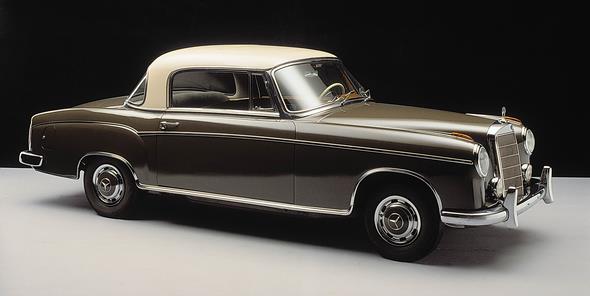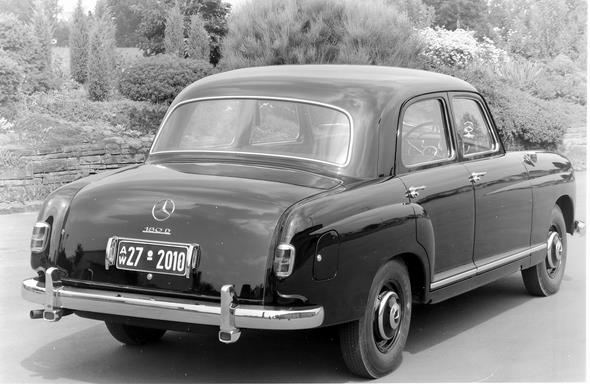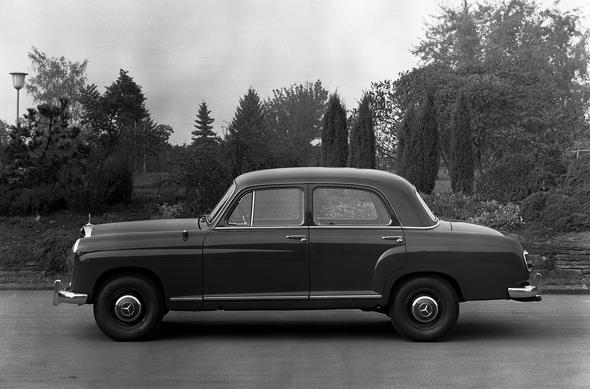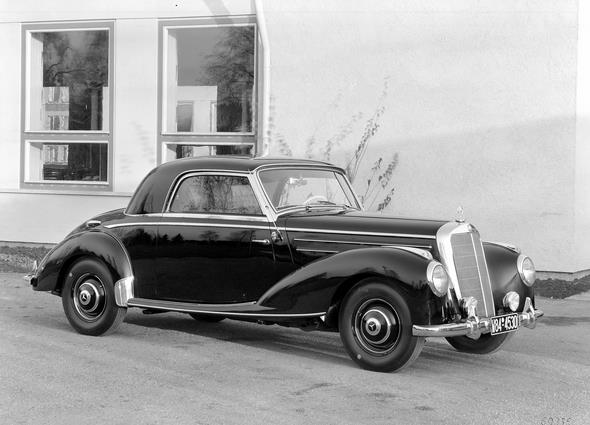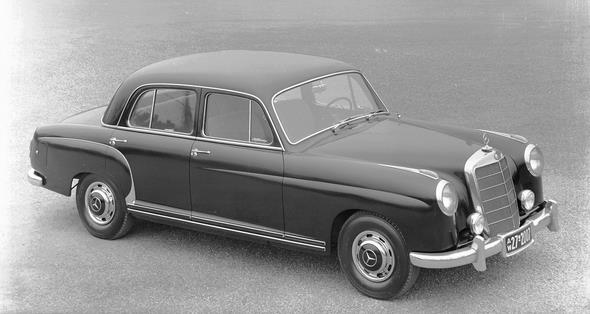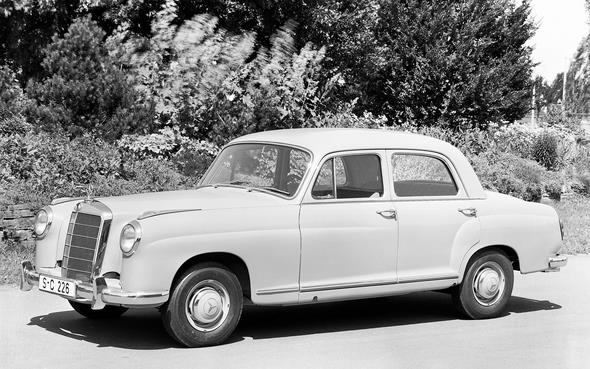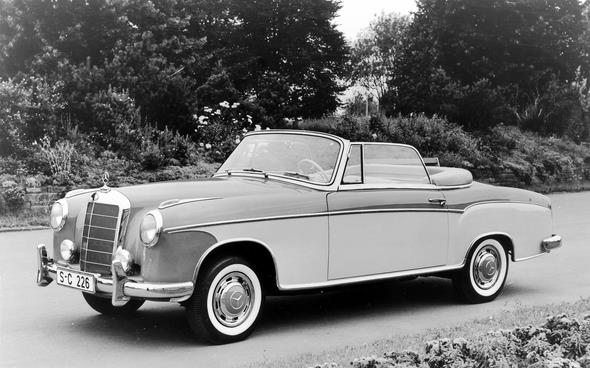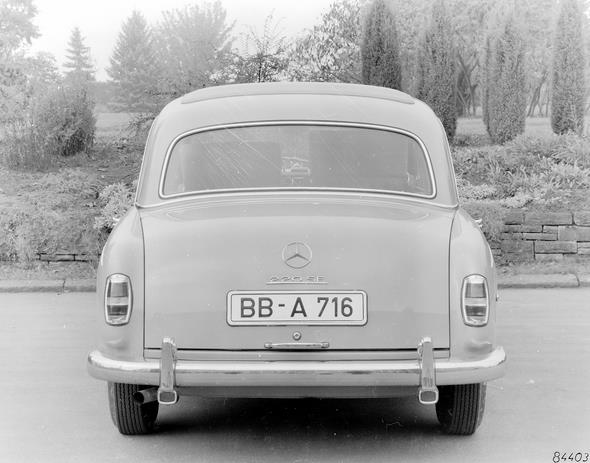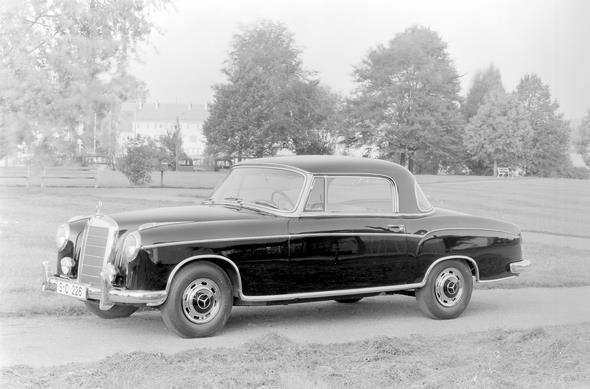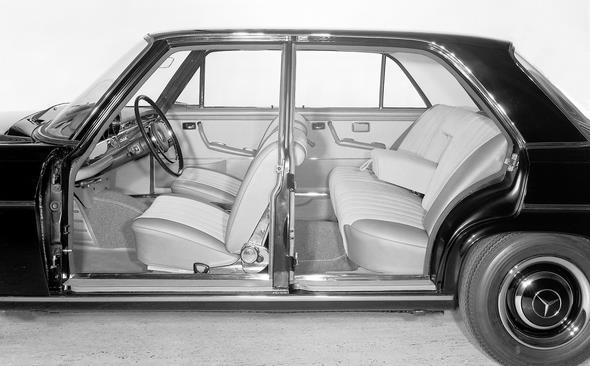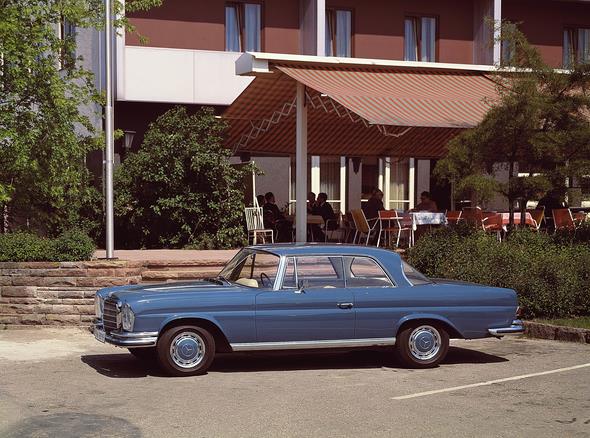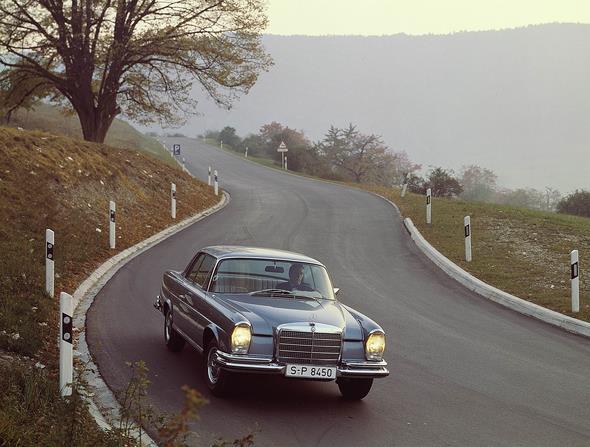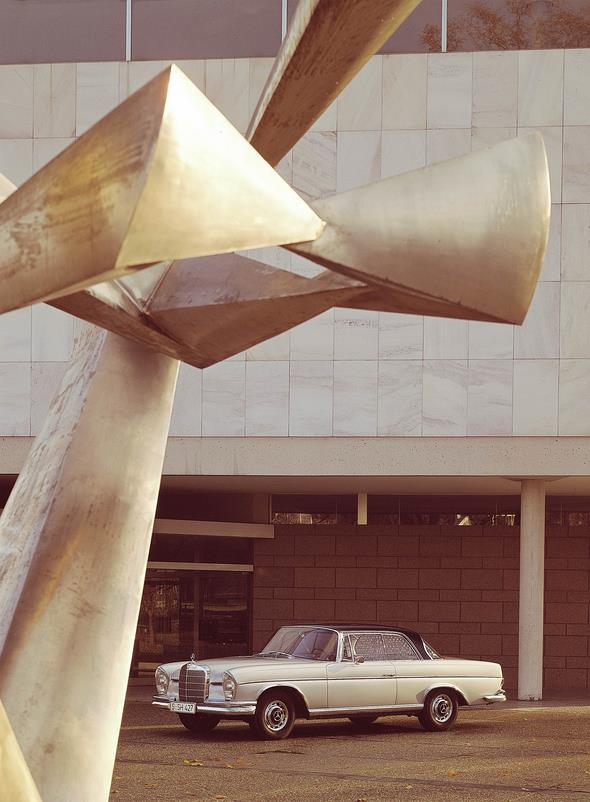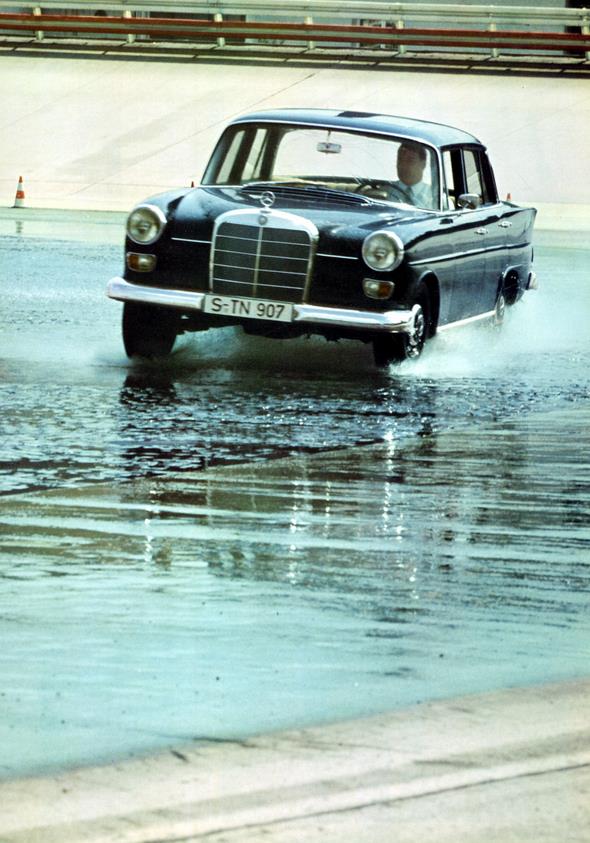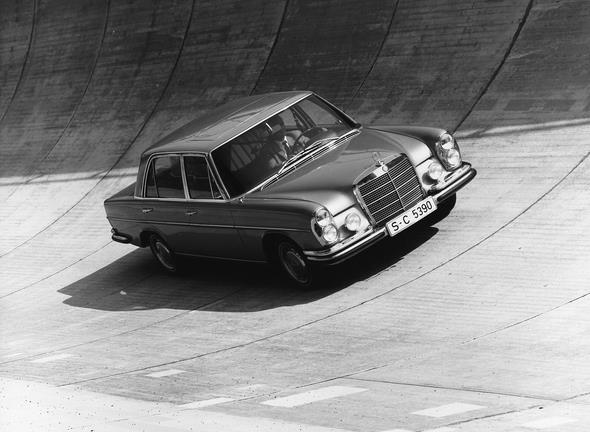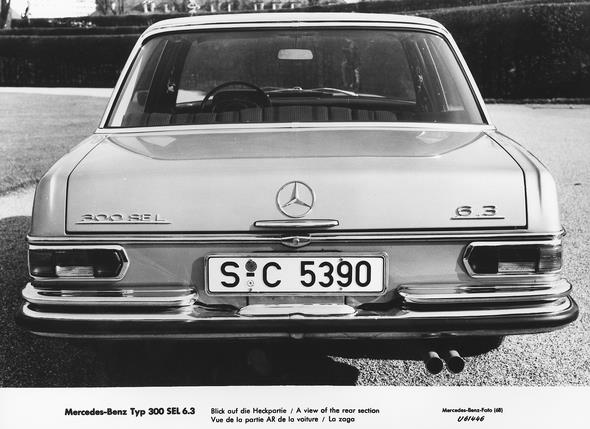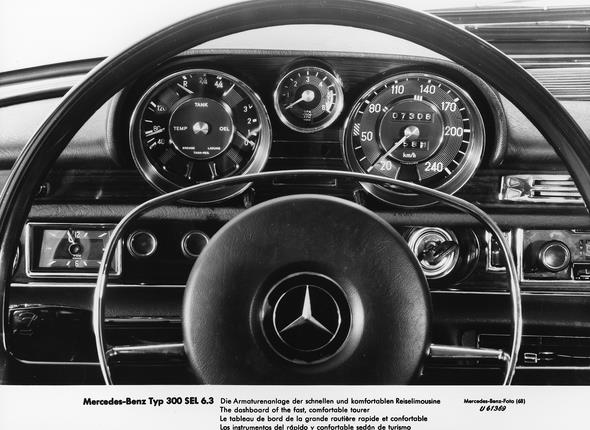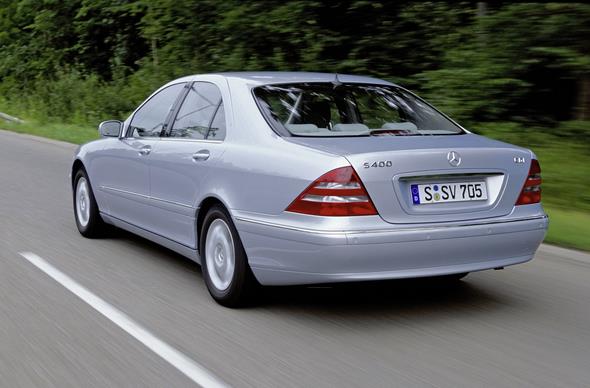

· Unbroken tradition from 1951 through today
· Outstanding car in every detail – comfort, safety, engineering, design
· World’s best-selling premium-class car
Stuttgart. People have always bought the Mercedes-Benz S-Class for its effortless and luxurious ride quality. Or for its outstanding safety features.
Or for its pioneering technology. And they’re right, of course. But the S-Class offers much more besides.
The Mercedes-Benz S-Class is the ultimate reward for a lifestyle shaped by mobility, individuality, success and sophistication.
You don’t simply decide to buy an S-Class: it comes to you when fate has ordained that your life should take that course.
The door closes with a reassuring clunk – and you have arrived. This is what makes the car and its predecessors unique among the world’s great saloons. And that’s the way it has been for almost 60 years.
The S-Class from the W 221 series was presented at the 2005 IAA. In 2009 it underwent a comprehensive model enhancement package, which prompted Dr. Dieter Zetsche, Chairman of the Board of Management at Daimler AG and Head of Mercedes-Benz Cars, to comment: “The S-Class is a worldwide market leader.
Thanks to its state-of-the-art technology, first-class comfort and pioneering safety systems, the flagship model from Mercedes-Benz is considered the avant-garde of automotive development.”
The S-Class story begins officially with the W 116 (1972 to 1980). It was the first to be given the model designation that soon became symbolic of a genre.
Not for nothing was the S-Class frequently referred to as the finest car in the world. But the history of the S-Class actually goes back much further.
The following models laid the foundations for the post-war tradition of the great Mercedes-Benz premium-class saloons:
· 220, W 187 series (1951 to 1954)
· 220 a, 219, 220 S and 220 SE,
· W 180/105/128 series (1954 to 1959)
· 220 b, 220 Sb, 220 SEb, 230 S, 300 SE, 300 SEL,
· W 111/112 series (1959 to 1968)
· 250 S – 300 SEL 6.3, W 108/109 series (1965 to 1972)
· S-Class, W 116 series (1972 to 1980)
· S-Class, W 126 series (1979 to 1991)
· S-Class, W 140 series (1991 to 1998)
· S-Class, W 220 series (1998 to 2005)
· S-Class, W 221 series (from 2005)
The S-Class from the W 221 series entered series production in 2005 with a wealth of technical innovations that made the Mercedes-Benz flagship a model of passenger car development as a whole – including Brake Assist PLUS with radar sensors, Night View Assist with infrared technology, the new advanced COMAND system and preventive passenger protection system PRE-SAFE® with additional functions, Active Body Control and the dynamic multi-contour seat with additional massage function.
Not long after its market launch it became the world’s number one top-selling luxury saloon and firmly established itself in the international prestige class market.
Technical highlights of the S-Class and its predecessor series
The Mercedes-Benz S-Class has always been in the avant-garde of automotive technology. Over the years it has brought many innovations to market which subsequently found a widespread application. What follows is a brief overview of the distinctive design features found in the individual model series.
Mercedes-Benz 220, W 187 series (1951 to 1954)
· Newly designed six-cylinder engine with overhead camshaft
· Safety door lock to prevent doors bursting open
· Duplex drum brakes at the front
Mercedes-Benz 220 a, 219, 220 S and 220 SE, W 180/105/128 series (1954 to 1959)
· Self-supporting chassis/body structure
· Front axle subframe
· Single-joint swing axle with a lowered pivot
· Brake drums with “turbo cooling”
· “Hydrak” hydraulic-automatic clutch (from 1959)
· Mechanically-controlled petrol injection (220 SE, from 1958)
Mercedes-Benz 220 b 220 Sb, 220 SEb, 230 S, 300 SE, 300 SEL, W 111/112 series (1959 to 1968)
· Safety passenger cell with crumple zones (front and rear)
· Padded steering wheel
· Wedge-pin door locks
· Disk brakes (300 SE)
· Three-point seat belts
· Four-speed automatic transmission
· Air suspension (300 SE)
· Long-wheelbase version available (300 SE)
Mercedes-Benz 250 S – 300 SEL 6.3, W 108/109 series (1965 to 1972)
· First independent premium-class model series
· Patented safety steering system
· Hydropneumatic balancer spring on the rear axle
· Air suspension (300 SEL, 300 SEL 6.3
S-Class W 116 series (1972 to 1980)
· Officially designated “S-Class” for the first time
· Anti-lock brake system ABS from 1978
· Largest post-war passenger car engine with 6.9-liter displacement in the 450 SEL 6.9
· Double-wishbone front axle from the C 111 experimental vehicle
· Fuel tank located above the rear axle for protection in case of collision
· Safety design in the interior
· First premium-class car with diesel engine (300 SD)
S-Class W 126 series (1979 to 1991)
· New safety concept, first production car worldwide to meet the criteria of an offset crash
· Driver’s airbag and seat belt tensioner from 1981
· Front passenger airbag from 1985
· Three-point seat belts for rear seats
· Automatic locking differential
· Acceleration skid control ASR
· Drag coefficient of cd=0.36
· Still the most successful Mercedes-Benz saloon in the prestige class

S-Class W 140 series (1991 to 1998)
· Electronic Stability Program ESP® (S 420, S 500, S 600, from 1995)
· Brake Assist BAS (from 1996)
· Adaptive Damping System ADS
· Soundproofed windows
· Parameter steering with speed-sensitive steering moment
· Seat belt system with automatic height adjustment
· Sidebags
· First Mercedes-Benz twelve-cylinder production engine in a passenger car, at the time the brand’s most powerful passenger car engine
· Introduction of four-valve technology with adjustable intake camshaft for petrol engines
S-Class W 220 series (1998 to 2005)
· Seat belt tensioners and belt force limiters in the rear
· Automatic child seat recognition system
· Window bags
· PRE-SAFE® occupant protection system
· DISTRONIC autonomous intelligent cruise control
· Automatic cylinder shut-off
· Co-efficient of drag rating = 0.27
· KEYLESS-GO access system
· Air suspension with electronically-controlled AIRMATIC damping system as standard
· At the time world’s most powerful passenger car diesel engine in the S 400 CDI
· 4MATIC all-wheel drive (from late 2002)
Mercedes-Benz 220, W 187 series (1951 to 1954)
At the first Frankfurt International Motor Show (IAA) in April 1951, Daimler-Benz presented the 220 and 300 passenger cars. Aside from its 2.2-liter engine with 80 hp (59 kW), the 220 was largely based on the 170 S.
Running gear and body were almost identical, although the headlamps were now integrated into the specially modified front fenders. Production of the 220 saloon came to an end in May 1954.
Mercedes-Benz 220 a, 219, 220 S and 220 SE, W 180/105/128 series (1954 to 1959)
In March 1954 Mercedes-Benz introduced the new 220 model at the Geneva Motor Show. This decidedly modern overall design bore similarities to the 180 model that had gone into production six months earlier.
The 200 now also boasted a self-supporting ponton-type body structure welded firmly to the frame/floor unit. It was also the first Mercedes-Benz production car to benefit from the single-joint swing axle with low pivot point, which had been developed for the W 196 Formula One racing car.
The brake system was also much improved: The 220 a was given ribbed brake drums with “turbo cooling” on all four wheels.
In March 1956, two years after the presentation of the 220 a, the 219 and 220 S were introduced as successors to the first six-cylinder model a with ponton-type body.
In September 1958 Mercedes-Benz presented the new six-cylinder 220 SE model. Delivery started in November.
Mercedes-Benz 220 b, 220 Sb, 220 SEb, 230 S, 300 SE, 300 SEL, W 111/112 series (1959 to 1968)
In August 1959, the existing six-cylinder models were succeeded by three completely redesigned models under the slogan: “The new six-cylinders – in a class of their own.”
These were the 220 b, 220 Sb and 220 SEb. The new model series set new standards in terms of passive safety, incorporating for the first time in a production car the Barényi-patented rigid passenger cell with front and rear crumple zones.
In August 1961, the new premium-class 300 SE model was introduced.
In addition to having four-speed automatic transmission and the newly developed power steering, the basic equipment package also included air suspension – featured for the first time in a Mercedes-Benz passenger car and offering a combination of sporty ride characteristics together with outstanding suspension comfort.
Mercedes-Benz 250 S – 300 SEL 6.3, W 108/109 series (1965 to 1972)
In August 1965 came the next generation that included the 250 S, 250 SE and 300 SE models designed by Paul Bracq. And in March 1966, the model range was expanded to include the 300 SEL, the wheelbase of which was 100 millimetres longer than the basic model.
It also had air suspension as standard. Production of the 250 SE and 300 SE ended at the start of 1968. That January saw the introduction of the successor models 280 S and 280 SE, which differed from their predecessors only in respect of engine and equipment details.
In March 1968 came the top-of-the-range 300 SEL 6.3, which boasted the V8 engine and automatic transmission of the Mercedes-Benz 600, thus enabling it to match the potential output of a top-quality sports car.
Production of the highly successful W 108/109 model series came to an end in September 1972.
Mercedes-Benz S-Class, W 116 series (1972 to 1980)
The first official “Mercedes-Benz S-Class” – internal designation W 116 – replaced the W 108/109 series and initially included three models, the 280 S, 280 SE and 350 SE, which were later joined by the 450 SE and 450 SEL models.
One noteworthy technical innovation introduced for the first time as standard in the saloons of the W 116 series was the double-wishbone front suspension with zero-offset steering and anti-dive control, which originally underwent testing in the C 111 experimental vehicle.
This feature further improved handling characteristics. A new top-of-the-range model was presented in May 1975 – the 450 SEL 6.9.
And from fall 1978, the S-Class saloons of the W 116 series became the first vehicles in the world equipped with a technical innovation of ground-breaking significance: The anti-lock brake system ABS, which guaranteed the vehicle’s unrestricted steering response even under emergency braking.
Mercedes-Benz S-Class, W 126 series (1979 to 1991)
In September 1979, Mercedes-Benz presented a new generation of the S-Class at the IAA in Frankfurt. The body was built according to the latest findings in safety research.
Thanks to new design principles the passenger compartment could now withstand an “offset crash” at impact speeds up to 55 km/h.
In addition, the body was consistently designed according to the laws of aerodynamics, which led to a significant reduction in drag coefficient (cd=0.36) compared with the W 116 series (cd=0.41).
From 1981 the vehicle came with an airbag for the driver and – following the model refinement package of 1985 – for the front passenger also. Also in 1985, the engine range underwent a restructuring.
The most spectacular newcomer was a 5.6-liter eight-cylinder unit which generated 200 kW (272 hp). In addition, all models in the W 126 series now came equipped with 15-inch wheels and bigger brakes to match.
During the twelve-year production period a total of 818,036 saloons left the production workshops in Sindelfingen, making the W 126 series the most successful premium-class model series in company history.
Mercedes-Benz S-Class, W 140 series (1991 to 1998)
At the Geneva Motor Show in March 1991 the company introduced the S-Class from the W 140 series. A newly developed double wishbone front axle, mounted on a subframe, provided front suspension – a system designed to isolate the body from audible and perceptible vibrations.
Ride comfort was also improved considerably by the soundproofing properties of the windows, the first time this feature had been used in a passenger car series.
The 6.0-liter V12 engine was a completely new design, and not only the first series-produced twelve-cylinder ever built by Mercedes-Benz for a passenger car, but also the most powerful Mercedes-Benz car engine, with a rated power output of 300 kW (408 hp).
In June 1993 the model designations were changed so as to place the “S” in front of the three-digit number. At the Geneva Motor Show in March 1994, the S-Class saloons appeared with discreet stylistic revisions.
With effect from December 1996 the S 280 and S 320 models with automatic transmission were also equipped with the Electronic Stability Program ESP®.
At the same time another innovation – and world first – was put into operation: Brake Assist BAS. At the start of its career and particularly in Germany, the largest S-Class to date did not have an easy time of it – despite having undeniable qualities.
Nevertheless, by September 1998 a total of 406,532 saloons from the W 140 series had been built – 28,101 of them with diesel engines.
Mercedes-Benz S-Class, W 220 series (1998 to 2005)
With the S-Class from the W 220 series introduced at the Paris Motor Show in September 1998, the Mercedes-Benz product drive launched more than five years earlier reached a new high point.
More than 30 new developments once again made the S-Class from Mercedes-Benz a trendsetter for passenger car design in general.
These included automatic cylinder shut-off, which converted the S 500’s eight-cylinder unit into a four-cylinder as required, DISTRONIC autonomous intelligent cruise control and the PRE-SAFE® preventative occupant protection system (introduced in 2001), with which Mercedes-Benz moved into a new era of automotive safety.
Following the model enhancement package to the W 220 series (autumn 2002), the electronically-controlled 4MATIC all-wheel drive was available for petrol models with six and eight cylinders.
Production of the W 220 series is due to come to an end in late 2005, making way for the W 221 series. As we have come to expect from the Mercedes-Benz S-Class, this series is also sure to set new standards.
By December 2005 a total of 484,683 saloons from the W 220 series had rolled off the production lines at the Sindelfingen plant.
The most successful model of this generation was the S 500 long version, with unit numbers of 108,823 examples.
Mercedes-Benz 220, 187 series (1951 to 1954)
At the first Frankfurt International Motor Show (IAA) held in April 1951, Daimler-Benz presented the 220 model in addition to the 300 model, which was positioned as a representational vehicle.
Both offered completely new six-cylinder engines with overhead camshaft. Aside from its 2.2-liter engine with 80 hp (59 kW), the 220 was largely based on the 170 S.
Running gear and body were almost identical, though with the headlamps now integrated into the specially modified front fenders. In keeping with its appreciably increased output, the front wheels of the 220 were fitted with duplex brakes.
Chief engineer Fritz Nallinger said in a report dated 1951: “The perfectly balanced six-cylinder engine also benefits from a vibration damper and is cradled gently in the chassis by large rubber pads, and since it operates silently and without vibration at any speed, driving this economical and comfortable touring car is not just pleasurable but a delightful event on any occasion.”
The 220 went into series production in July 1951 and like the 170 S it came in three body variants – saloon, convertible A and convertible B.
The two convertibles, positioned as sporty touring cars of an exclusive nature, succeeded the corresponding versions of the 170 S, for which production came to an end in November 1951.
In addition to the aforementioned body variants, which were available to anyone well-heeled enough to be able to afford one, between August 1952 and May 1953 a total of 41 open-topped touring cars were specially built for the police.
At first sight this version revealed a striking similarity to the convertible B. But it differed in two significant respects: first, in that it was equipped with four doors, and secondly, typical for open-topped touring cars, it featured a soft-top without storm bars.
In addition, the 220 was also available as a chassis for special body variants. At Lueg in Bochum, for example, eight ambulances were built in October 1952, and the Binz firm of coachbuilders in Lorch built more than 30 radio police cars between October 1952 and July 1954 using the chassis of the 220.
A coupe is added
In November 1953 the convertible A was given a slightly curved rather than straight front windshield in order to accentuate further the sporty nature of this model.
From December 1953 – as a result of “the repeated insistence from certain prominent public figures,” as was stated in a memo circulated by sales management – there came an additional body variant: A coupe which, in view of its price tag and the number of units built, became the most exclusive of the 200 versions.
In terms of technology and styling, the coupe was based on the convertible A, and from April 1954 onwards both variants were fitted with a more powerful, higher-compression 85 hp (63 kW) engine, a unit that had been developed for the 220 a, the successor model produced from June 1954.
Production of the 220 saloon ended in May 1954, after the last convertible B had already left the Sindelfingen production facilities the previous year.
Many potential customers saw the saloon with sunroof – cheaper by more than DM 2,500 – as the more attractive alternative.
The coupe and convertible A continued in production until July and August 1955, respectively. Thereafter, customers had to wait another year until both body versions of the new 220 model became available with ponton-type bodies.
The W 187 series in the press
Auto, Motor und Sport, Germany, issue 23/1951, on the Mercedes-Benz 220:
“For the first time the 220 has combined within the shell of a relatively fuel-efficient vehicle above-average ride safety, sports car temperament and the comfort and solid respectability of a luxury car.”
ADAC-Motorwelt, Germany, November 1951, on the Mercedes-Benz 220:
“Viewed as a whole, not only are the handling characteristics of the 220 well above average, but we would venture to suggest that there can be few vehicle models in the entire world that boast such perfect handling qualities as this car.”
Automobil Revue, Switzerland, volume 5/1952, on the Mercedes-Benz 220:
“There is without doubt more to it than meets the eye. Its owners have at their disposal a fast, safe, comfortable and economical vehicle, the sum of whose qualities can be matched by very few touring cars in the same class and beaten only by more expensive ones.”
Mercedes-Benz 220 a, 219, 220 S and 220 SE, W 180/105/128 series (1954 to 1959)
In March 1954 Daimler-Benz introduced the new 220 model featuring a decidedly modern overall design. The six-cylinder model bore the internal designation 220 a or W 180 and now also boasted a self-supporting ponton-type body structure welded firmly to the frame floor/unit.
The close kinship to the 180 model was also evident in the styling, although the slightly different proportions of the 220 a gave it a certain undeniable elegance.
The convertible A and C variants were introduced in September 1955 and went into production barely a year later.
But the 220 a had a wheelbase that was longer by 170 millimetres, of which 70 millimetres went to improve legroom in the rear.
The remaining 100 millimetres served to lengthen the front end, necessary to accommodate the vehicle’s six-cylinder engine.
The engine hood was drawn down around either side of the radiator grille to almost level with the bumper, and the fresh-air intakes were situated behind the standard mounted fog lamps.
Unlike with the car’s younger brother, however, the front turn indicator lamps were mounted in chromed housings positioned well forward on the fenders.
Improved handling characteristics
The front suspension and subframe concept were borrowed from the 180 model; the rear suspension on the other hand was a completely new design.
The single-joint swing axle, which had a low pivot point and had been developed for the W 196 Formula One racing car, was now put into service for the first time in a Mercedes-Benz production passenger car.
The longer control arms meant smaller track and camber changes on spring compression and thus improved handling.
The six-cylinder engine of the 220 a came from the predecessor model of the W 187 series, but with a number of modifications: Compression was increased, and thanks to a sharper camshaft and larger carburettor the unit was able to raise the power output to 85 hp (63 kW).
The brake system was improved considerably. Ribbed brake drums with “turbo cooling” were fitted to the 220 a on all four wheels and ventilation slits in the wheel rims and trims ensured an adequate supply of cool air.
A brake booster was fitted as standard from September 1955.
In March 1956, two years after presentation of the 220 a, the 219 and 220 S models were introduced to the public as successors to the first six-cylinder models with ponton-type bodies.
The 220 S was considered the direct successor, however, as expressed in the car’s internal designation W 180 II. It was largely based on the predecessor model, but thanks to two compound carburettors, engine power had now been increased to 100 hp (74 kW).
In addition to being mounted on bearings at the front of the subframe, the engine was given two additional points of support to the rear.
From the outside, the only visible difference between the 220 S and its predecessors was the additional trim – thin chromium strips having been added to the beading on the front fenders and doors. Production of the convertible A and C variants began in July 1956; the coupe followed in October 1956.
The other six-cylinder model presented at the same time as the 220 S bore the unusual and less prestigious model designation 219.
Known internally as the W 105 series, the model came about as a combination of the 190 and 220 a to a certain extent, its purpose being to win new customers as a significantly cheaper and more basically equipped six-cylinder model.
The engine was taken over unmodified from the 220 a, and the running gear, body from the A-pillar rearwards and equipment all came from the 190.
But as the six-cylinder engine required a longer front end, this was supplied by the 220 a. Accordingly, the wheelbase and overall length of the 219 were shorter than the 220 S but longer than the 190.
Numerous improvements
Under the slogan: “Even more valuable, but no more expensive”, almost all passenger car models were presented in August 1957 with a range of improvements – some more obvious than others. Both the six-cylinder ponton-type models were fitted with more powerful engines in which the increased output – five hp (3.7 kW) in the 219 and six hp (4.4 kW) in the 220 S – was achieved by raising the compression ratio to 8.7:1.
The interior equipment was also modified, as were the front bumpers. These had different fixtures for the license plate panel and additional lateral anchorage points.
In the 220 S these additional anchorage points were also a feature of the rear bumper, and the front bumper horns were replaced with the larger design already familiar in the coupes and convertibles.
In addition, in line with the four-cylinder models, the license plate illumination was integrated into the rear bumper horns so that the recently introduced enlarged license plates could be fitted without problem.
But the most notable innovative feature was the introduction of the “Hydrak” hydraulic-automatic clutch, available on both models as an option.
The “Hydrak” system combined a hydraulic clutch for moving off, a conventional single-plate dry clutch for engaging and disengaging during gearshifts, and a freewheel clutch to overrun the hydraulic clutch.
The new six-cylinder 220 SE model was presented in September 1958 and produced from November onwards. Here, too, there were the convertible variants A and C, as well as a coupe; these made their debut in October 1958.
Known internally as the W 128 series, it was very largely the same as the 220 S, but was fitted with a modified engine with direct gasoline injection.
Except for the mixture preparation, which was taken care of by the same timed manifold injection as in the 300 d, the 2.2-liter unit was identical to the trustworthy 220 S engine, and now delivered 115 hp (85 kW).
However, the increase in power output and improved performance with lower fuel consumption were not the only remarkable aspects.
So too was its hefty additional price tag of DM 1,900. The “Hydrak” automatic clutch was also available as an option, though this added another DM 450 to the bill.
With these added costs and a short production run of just ten months, the 220 SE was the most exclusive model in the series – with just 1,974 units built.
In August 1959 three brand-new six-cylinder models in the W 111 series were introduced as successor models to the 219, 220 S and 220 SE.
During the five-and-a-half year production period a total of 111,035 six-cylinder saloons with ponton-type bodies were built.
From a strictly design point of view, the ponton-type body was also a feature of the successor models as well as every other Mercedes-Benz saloon built since.
Nevertheless, in the automotive language of today the term “Ponton Mercedes” is reserved exclusively for the original model generation.
W 180/105/128 series in the press
Das Auto, Motor und Sport, Germany, issue 19/1954, on the Mercedes-Benz 220:
“One of the most distinctive features of this car is its absolute handling safety even at high speeds.
Even on the poorest roads it does not pay a moment’s thought to departing its track, and it takes even the trickiest of corners in its stride, without requiring any particular steering corrections and without any perceptible lateral inclination. […] In addition to its elasticity, the engine of the 220 is remarkable for its exemplary balance and smooth-running, only when idling is a slight vibration detectable.”
Das Auto, Motor und Sport, Germany, issue 1/1958, on the Mercedes-Benz 219 with “Hydrak” hydraulic-automatic clutch: “Overall the Hydrak proves to be a perfect hydraulic-automatic clutch, foolproof in terms of its functioning and yet certainly not boring for those who set store by technical niceties.”
Das Auto, Motor und Sport, Germany, issue 4/1959, on the Mercedes-Benz 220 SE:
“This 1,400 kg car (with full tank and radio) is so responsive to the accelerator pedal that it is no exaggeration here to talk of it setting new standards – at least as far as any reputable conventional car is concerned. With the typical quiet engine characteristics associated only with 6 cylinders or more, we experienced the sort of driving culture one normally only enjoys in truly large-displacement vehicles.”
Mercedes-Benz 220 b, 220 Sb, 220 SEb, 230 S, 300 SE, 300 SEL, W 111/112 series (1959 to 1968)
In August 1959, the company announced a thoroughly revised passenger car range. Under the slogan: “The new six-cylinders – in a class of their own” and as successors to the existing six-cylinder models came the following three completely re-designed models – the 220 b, 220 Sb and 220 SEb of the W 111 series.
In addition to various differences in equipment detail, the three new models also differed in terms of their engines. A coupe version of the 220 SEb arrived in February 1961, and a convertible followed in September that same year.
What the three saloons had in common, however, was an exceptionally spacious and elegantly styled body, the most distinctive features of which were its tailfins – a concession to the American influence on contemporary tastes.
This characteristic design element would later give rise to the name by which the entire model generation came to be known – today the generic term “fintail” is applied to all these models.
The new model series set new standards in terms of passive safety, for these were the first production cars to feature the Barényi-patented rigid passenger cell with front and rear crumple zones.
Safety was also given top priority in the design of the interior. The new models had a padded instrument panel, for example, with yielding and in part recessed controls, as well as a steering wheel with padded boss.
Also worthy of note was the first use in this form of safety door locks, likewise major contributors to safety in the case of accident.
From the purely external point of view, the 220 b differed in eight features from its two sister models. The 220 Sb and 220 SEb, which were identical on the outside with the exception of the model designation, each had an additional chrome strip to either side of the radiator grille, a chrome-plated air intake grille in front of the windshield, and chrome-plated wheel trim.
At the rear the differences were rather more apparent. The two models with the “S” in their model designation had a chrome strip above the rear screen, an ornamental moulding to round off the trunk lid, larger rear lights with integrated license plate lamps, as well as additional bumper horns between the rear lamps and rear bumper.
In addition, the tailfins – officially known as “guide bars” – had ornamental mouldings not only to the rear end-piece but also to the upper edge.
Tried-and-tested engines
The engines were to all intents and purposes the same as those of the predecessor models but with minor modifications. All three units had modified valve control linkage and a steeper camshaft.
The 220 b engine was now fitted with two carburettors and delivered 95 hp (70 kW), 110 hp (81 kW) in the 220 Sb. The direct injection unit for the 220 SEb featured straight intake pipes and developed 120 hp (88 kW).
The running gear and brake system also largely came from the predecessor models, although the suspension had been thoroughly revised in certain respects.
At the front, the subframe design introduced with the ponton-type models was retained, although the shape was modified to a simple cross-member design joined flexibly to the frame floor at only two points.
At the rear, the tried-and-tested single-joint swing axle was fitted with a compensating spring, positioned horizontally above the pivot point in order to distribute axle load equally to both drive wheels.
The shock absorbers on the front and rear wheels were now positioned right on the outside, a measure that not only provided more effective vibration damping but also improved accessibility.
During the production period the brake system underwent two modifications. First the 220 Sb and 220 SEb were equipped with disk brakes to the front wheels in April 1962.
Then in August 1963 the same modification was added to the 220 b and the model was simultaneously equipped with a brake booster – a feature available up until that point only at extra cost.
As part of these changes, all three models were also fitted with a dual-circuit brake system, which offered safe retardation of the vehicle even when one of the circuits failed.
“Hydrak” hydraulic-automatic clutch
As with their predecessor models, the three new W 111 models were also optionally available with the “Hydrak” hydraulic-automatic clutch, although only until early 1962.
After years of in-house development to reach production standard, a fully fledged automatic transmission was ready for use from April 1961, initially in the 220 SEb only, and then also from August 1962 upon order with the 220 b and 220 Sb – at an extra cost of DM 1,400.
Unlike with the Borg-Warner automatic transmission available with the 300 c from 1956 and the 300 d successor model from 1957, the company’s own design did not use a torque converter, but instead relied on a hydraulic clutch.
This had the advantage of reducing power loss. The downstream four-speed planetary gear train consisted of two planetary gear sets, three multi-plate clutches and three band brakes.
A new top-of-the-range model
In August 1961 the 300 SE was introduced as the new premium-class model, a vehicle which in terms of its external appearance and technical design lent heavily on the 220 SEb, but which also included numerous technical tidbits as standard.
Coupe and convertible made their debut in February 1962. In addition to the four-speed automatic transmission and the likewise newly developed power steering, basic equipment also included air suspension – a first for a Mercedes-Benz passenger car – which offered a combination of sporty handling with top-quality ride comfort.
The brakes represented a further innovation in the model bearing the internal designation W 112, since this was the first Mercedes-Benz production car to be equipped with a dual-circuit brake system as well as disk brakes at the front and rear wheels.
The 3.0-liter direct injection engine was based on the tried-and-tested unit used in the 300 d model, but it featured a light-alloy block with pressed-in cylinder liners and was approximately 40 kilograms lighter as a result.
As with the predecessor model, mixture preparation was achieved using timed manifold injection with a Bosch two-plunger injection pump.
In January 1964, the compression was raised very slightly and the injection system converted to a Bosch six-plunger injection pump.
This permitted engine output to be increased from 160 hp (118 kW) to 170 hp (125 kW).
The body of the 300 SE was almost identical to that of the 220 SEb, but it offered more in the way of chrome trim. The most distinctive difference was the chrome strip in the lateral beading that ran from the headlamps to the rear lights; in addition, the 300 SE featured trim around front and rear wheel arches as well as a broad chrome strip beneath the doors.
Less striking, perhaps, were the additional small “300 SE” plates integrated into the ornamental mouldings on the
C-pillars. The 300 SE was also optionally available without these decorative elements.
The advent of the long version
At the Geneva Motor Show in March 1963, the company introduced the long 300 SE version, which apart from its 100-millimeter longer wheelbase, was identical to the basic 300 SE model.
The extra space served exclusively to increase legroom in the rear and the entry width for the rear doors. The long 300 SE was also optionally available with partition wall and electrically operated dividing screen.
Apart from the difference in length between the 300 SE and the long 300 SE, an additional equipment detail made it easy to distinguish between the two cars: The long version had no ornamental moulding on the C-pillar since the through-flow ventilation was designed differently and there were therefore no vents.
With effect from the introduction of the long-wheelbase version, both variants, the 300 SE and the 300 SE long, were also available with four-speed manual transmission; this reduced the sale price by DM 1,400.
In July/August 1965 production came to an end for the 2.2-liter and 3.0-liter models with “fintail” bodies. The successor models were the 250 S, 250 SE and 300 SE, which collectively belonged to an entirely different model generation.
At the same time, the 220 b was replaced by the 230 S. In spite of the unusual model designation, the new model was basically a familiar face: The 230 S was to all intents and purposes identical to the 220 Sb, though with a revised engine.
By boring up the tried-and-tested 2.2-liter unit and increasing the compression, output was raised by 10 hp (7.4 kW) to 120 hp (88 kW).
Another new feature was the hydropneumatic compensating spring on the rear axle, which replaced the coil spring used up to that point and ensured a constant body height regardless of the size of the load.
From the outside it was impossible to distinguish the 230 S from the 220 Sb – other than by casting a glance at the model designation on the trunk lid.
Even though the 230 S had something of the character of an end-of-line model from the outset, a total of 41,107 units were built prior to the discontinuation of production in January 1968, 341 of which were chassis for special bodies.
One special version of the 230 S should not go without a mention: A station wagon, which was built at the Belgian firm of coachbuilders IMA on the chassis of the 230 S and sold through the Daimler-Benz sales organization from August 1966 onwards under the model designation “230 S Universal”.
Between 1959 and 1968 the Sindelfingen plant turned out a total of 344,751 saloons and chassis for the W 111 and 112 model series.
The W 111/112 series in the press
Autocar, England, November 6, 1959, on the Mercedes-Benz 220 SE:
“In summary the 220 SE has outstanding road manners, undoubtedly allied to the firm’s long experience in racing. In addition, it permits the achievement of high and sustained cruising speeds with very good economy. The interior is planned to carry five people and their luggage over long distances, in a manner matched by few other cars, irrespective of their country of origin.”
Sports Cars, England, December 1959, on the Mercedes-Benz 220 S and 220 SE:
“’Fabelhaft’ is the German word for fabulous and this about sums up the new W 220 Mercedes. It sets a new standard for the industry, a standard that few manufacturers will be able to equal.”
Auto, Motor und Sport, Germany, volume 19/1963, on the Mercedes-Benz 300 SE:
“The 300 SE also operates as a kind of signboard for the Daimler-Benz car range, combining in one vehicle every design refinement available: Air suspension, automatic transmission, power steering. … There are few cars in the world in which one can travel in such comfort and safety as in the 300 SE.”
Mercedes-Benz 250 S – 300 SEL 6.3, W 108/109 series (1965 to 1972)
The new premium-class model generation consisting of the 250 S, 250 SE and 300 SE were presented in August 1965, establishing succession to the 220 Sb, 220 SEb and 300 SE fintail models.
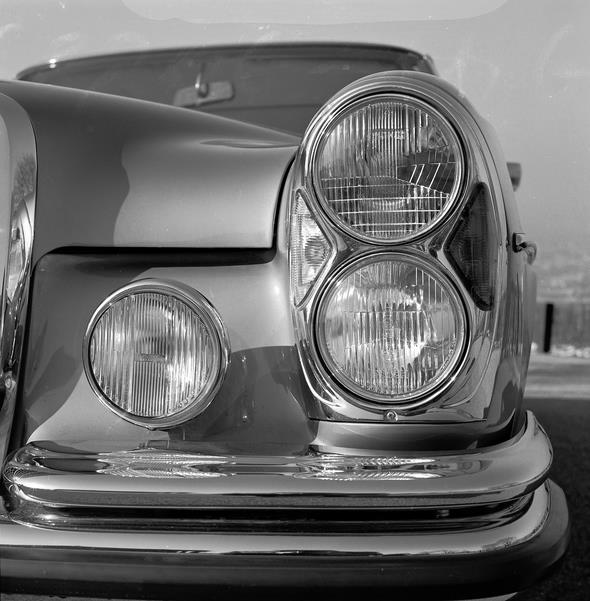
All three models shared a body designed by Paul Bracq, whose clean lines dispensed with all fashionable excess and whose restrained elegance has timeless appeal even today.
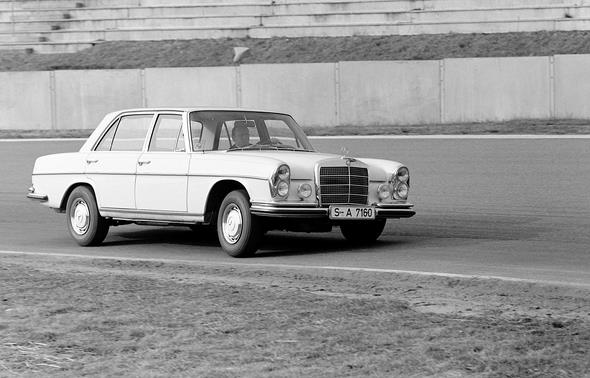
In terms of their engineering design, the new models were based to a large extent on their predecessors. Other than the body, however, new features also included the two 2.5-liter engines, which were developed by increasing the bore and lengthening the stroke of the corresponding 2.2-liter units.
Now the crankshaft was mounted on seven bearings, and an oil-water heat exchanger guaranteed improved heat load in the oil system. In the direct-injection version a six-plunger injection pump now replaced the two-plunger pump.
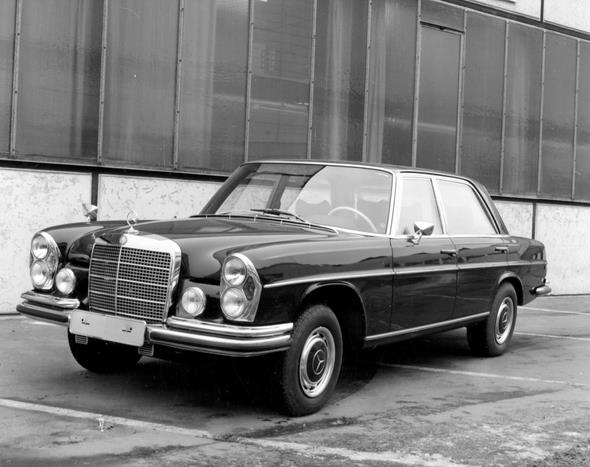
In contrast to its predecessor model, however, the new 300 SE was no longer fitted with air suspension. Instead, as with the two 2.5-liter models, it had a hydropneumatic compensating spring on the rear axle, which replaced the familiar coil spring and ensured a constant body height regardless of the load.

In March 1966 the model range was expanded to include the 300 SEL, which had a 100-millimeter longer wheelbase compared with the basic model, the extra space serving exclusively to increase legroom in the rear and the entry width of the rear doors.
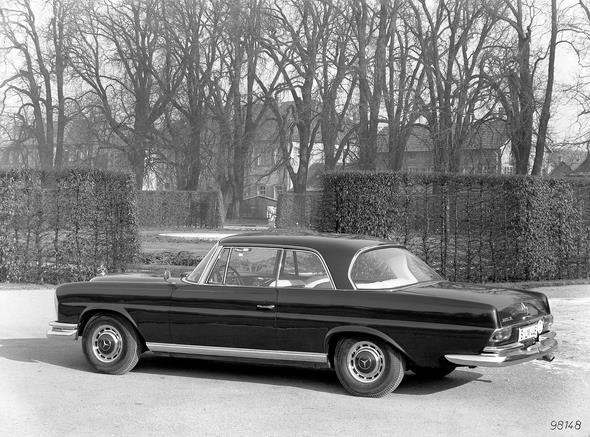
As with its direct predecessor with the same model designation, the new 300 SEL featured air suspension as standard. Internally the models with conventional suspension were grouped under the W 108 model series, the air-sprung 300 SEL however was given its own series with the designation W 109.
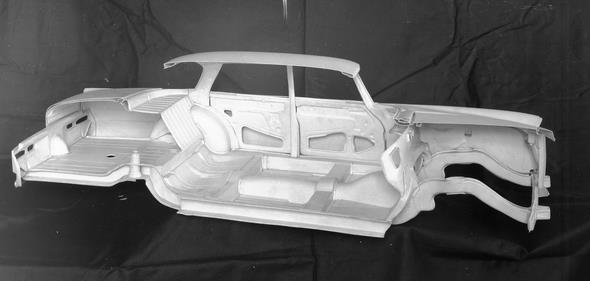
Two special variants
In 1966 and 1967 two very special variants of the 300 SEL were built in Sindelfingen, never intended for series production and specially developed for the Vatican.
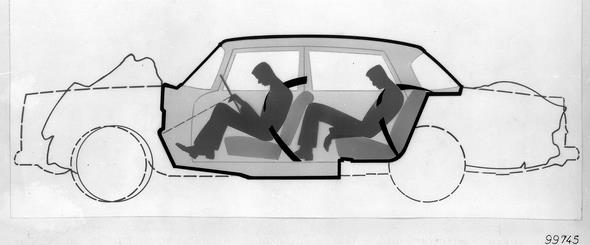
In June 1966 a landaulet with normal wheelbase was built, which differed from the series saloon in that it had only a single seat at the rear and a landaulet soft-top that stretched to the front edge of the rear doors.
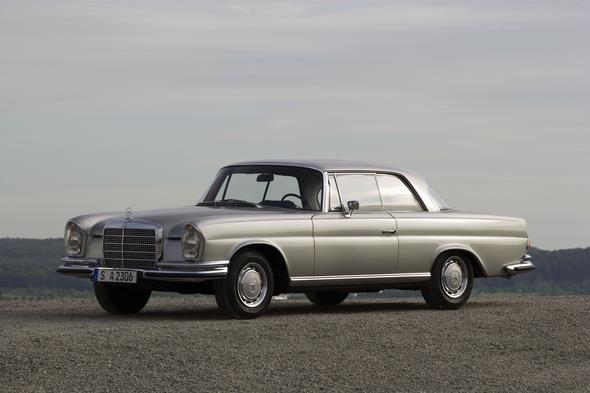
Almost a year later, in May 1967, the landaulet was joined by two identical six-seater saloons, which were built on a floor assembly that had been lengthened by 650 millimetres and boasted modified rear doors as well as two folding seats in the rear.
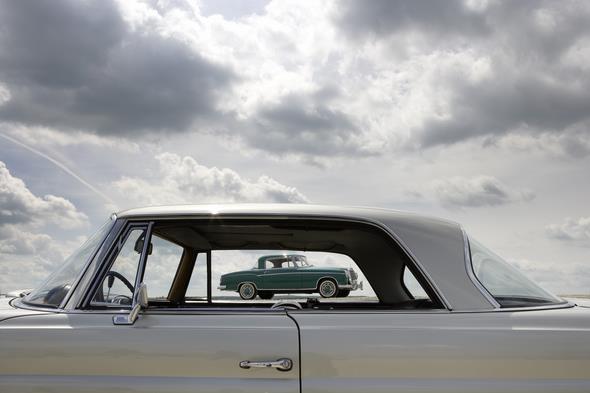
The landaulet was intended as a second vehicle for use alongside the Mercedes-Benz 600 by His Holiness himself, whereas the two Pullman saloons were to be used for transporting Vatican guests.
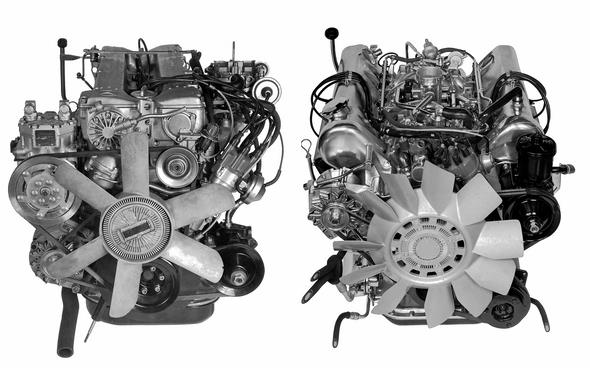
Production of the 250 SE and 300 SE models came to an end at the start of 1968, with the introduction of the two successor models 280 S and 280 SE in January.
These differed from their predecessors only in terms of their engines and certain equipment details.
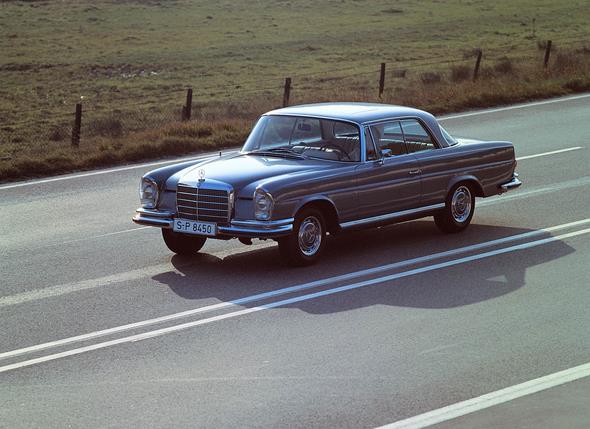
The newly-developed 2.8-liter six-cylinder engine delivered 140 hp (103 kW) in the carburettor version, and 160 hp (118 kW) with direct fuel injection.

Likewise from January 1968 onwards, an output-enhanced version of the injection engine giving 170 hp (125 kW) was fitted not only to the 280 SL, but also to the 300 SEL, where it replaced the 3.0-liter light-alloy engine in service to that point.
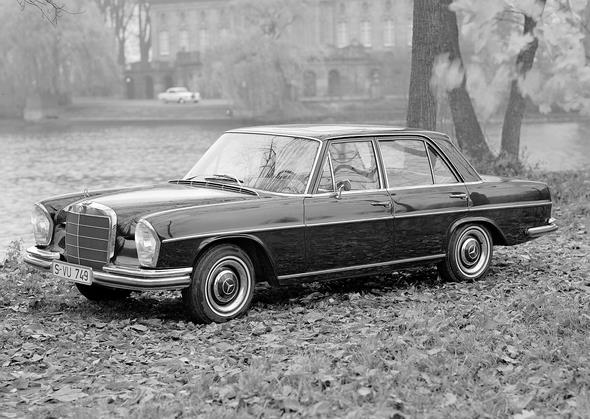
The top-of-the-range Mercedes-Benz 300 SEL 6.3
March 1968 saw the introduction of the top-of-the-range 300 SEL 6.3, featuring the V8 engine and automatic transmission of the Mercedes-Benz 600 and hence with the performance potential of a top-class sports car.
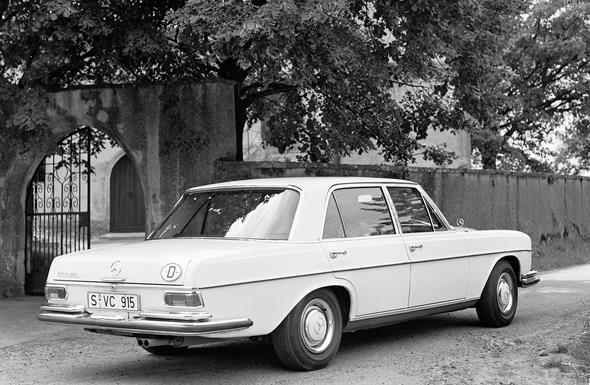
Its presentation at the Geneva Motor Show caused a sensation, especially as there had been no announcements made prior to the event.
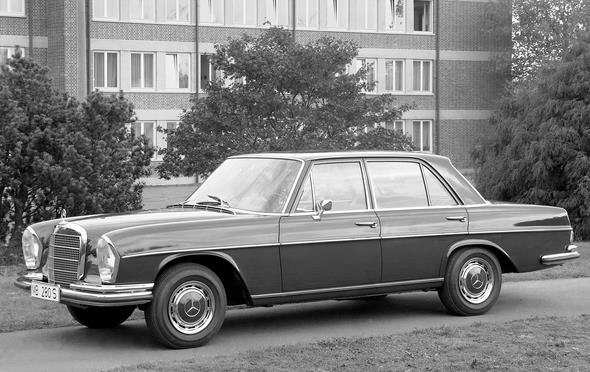
The 6.3’s only distinguishing external features were its wider tires, double halogen headlamps and an additional set of high beams.

The engine delivered 250 hp (184 kW), but of greater significance perhaps was its mighty torque of 51 mkg (500 Newton meters), which took the saloon from 0 to 100 km/h in 8 seconds and gave the car a top speed of 221 km/h.
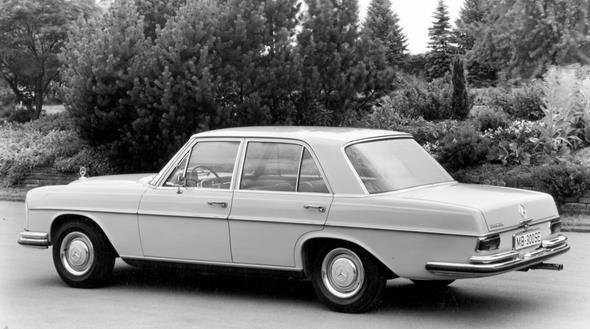
Although the 6.3 cost over DM 10,000 more than the 300 SEL and was more than double the price of the 280 SE, the Mercedes-Benz 300 SEL 6.3 was the object of comparatively lively interest and unit numbers totalled 6,526.
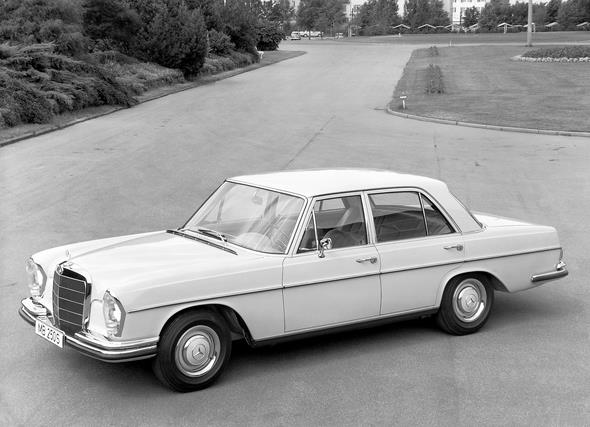
In fall 1969, the 300 SEL with the 2.8-liter six-cylinder engine was replaced by the 300 SEL 3.5, whose power unit – a completely new design – was a “small” V8 engine with 3.5-liter displacement and 200 hp (147 kW).
From March 1971 onwards this engine was also used in the 280 SE 3.5 and 280 SEL 3.5 which had conventional steel springs.
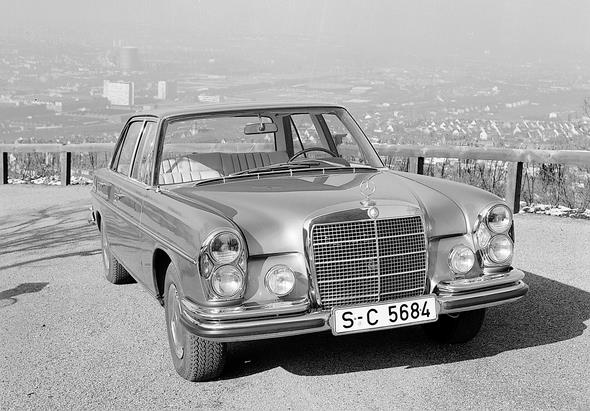
The 280 SE with six-cylinder engine was also still available, but the 280 SEL was removed from the range in preference for the eight-cylinder model. In parallel to the 3.5-liter V8 engine, there was also a more powerful variant with 4.5-liter displacement built exclusively for the North American market.
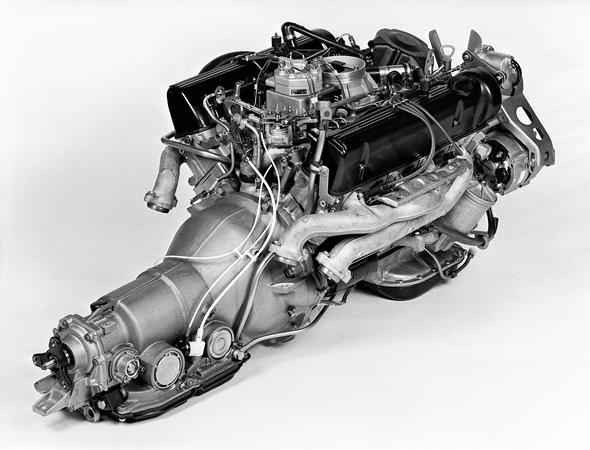
This was delivered from May 1971 in the 280 SE 4.5, 280 SEL 4.5 and 300 SEL 4.5 export models.
One special model variant in the W 108/109 series not available on the free market was built in 1971 – the armoured version of the 280 SEL 3.5.

No armoured vehicles had been produced at Daimler-Benz since the bullet-proof Mercedes-Benz 600 Pullman saloon in June 1965, but suddenly there were requests from various federal agencies to develop such a variant.
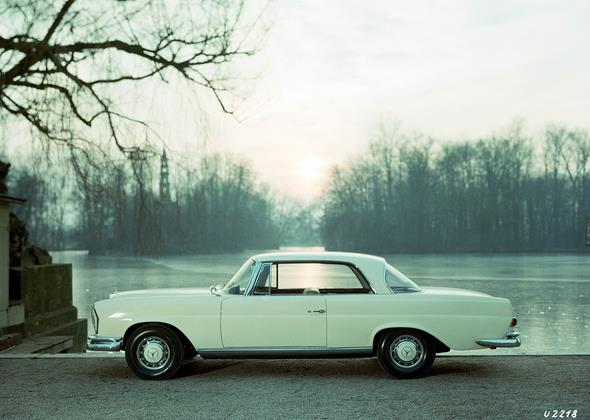
As a result of the attacks carried out on diplomats in Latin America in 1970 the Foreign Ministry was obliged to give special protection to the official cars of some of its mission chiefs.
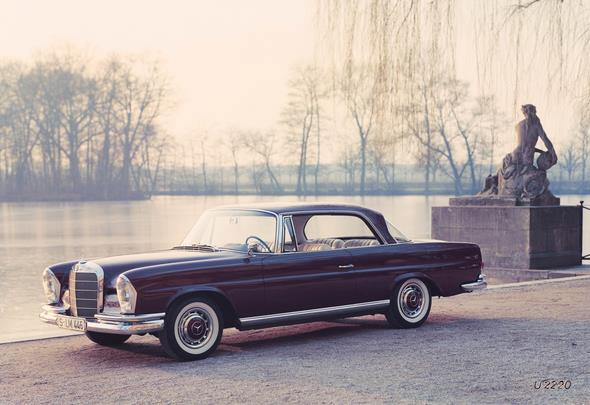
The result of these measures was the armoured 280 SEL 3.5 model, of which 28 units were built between May 1971 and September 1972 and delivered to West German foreign missions in hot spots.
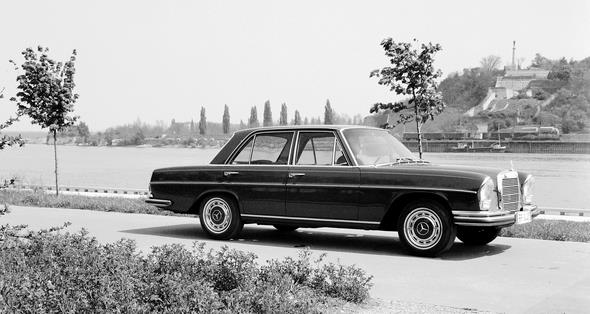
Production of the highly successful W 108/109 series came to an end in September 1972. In total 383,341 vehicles were built. Their successor was the W 116 series, the first models to be given the name S-Class.
The W 108/109 series in the press
Auto, Motor und Sport, Germany, issue 2/1966, on the Mercedes-Benz 250 SE:
“The ease, quietness and gentleness when driving, the handling safety at high speeds and on cornering, the outstanding interior equipment, the attention to quality and design paid even to secondary details speak for themselves and rank the 250 SE well up with the worlds best cars.”
Auto, Motor und Sport, Germany, volume 6/1968, on the Mercedes-Benz 300 SEL 6.3:
“We took delivery of one of the closely guarded first units, a vehicle not yet even fitted with the “6.3” designation.
The lack of model badge seemed to cause confusion to many a Porsche 911 and 911 S driver, normally accustomed to being kings of the motorway and who now suddenly found themselves being left looking flat-footed by the distinguished and relatively harmless-looking Mercedes.
Should any of them be reading this, we would wish to point out that they have no cause to return their vehicles to the factory on account of deficient performance.”
Mercedes-Benz S-Class, W 116 series (1972 to 1980)
A brand-new premium-class vehicle generation was presented to the public in September 1972.
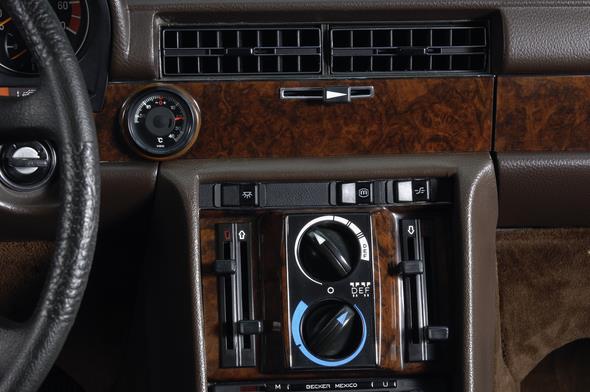
The first officially designated “Mercedes-Benz S-Class” – internal designation W 116 – replaced the W 108/109 series and was initially comprised of three models: the 280 S, 280 SE and 350 SE.
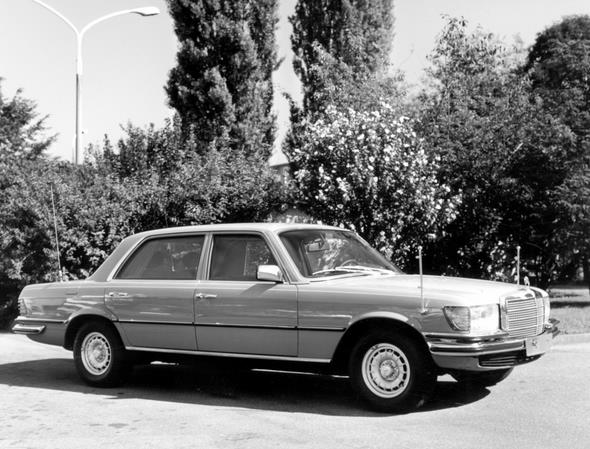
The 280 S and 280 SE models featured the six-cylinder engine M 110 with dual overhead camshafts that had made its debut in the W 114.
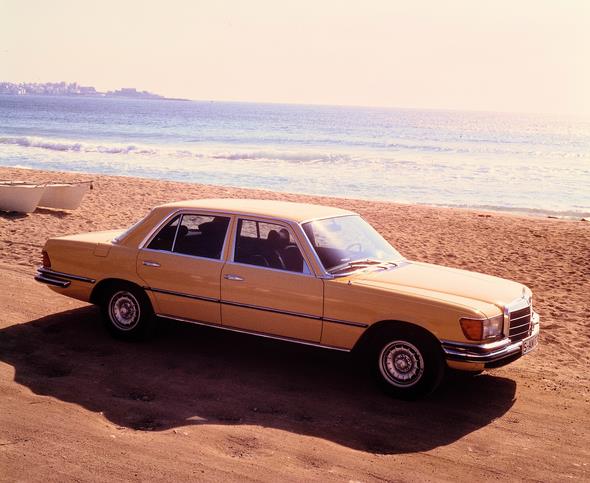
Six months later the S-Class saloon was also offered with the larger 4.5-liter V8 engine in parallel to the 450 SL and 450 SLC.
At the same time the 450 SEL was introduced, its wheelbase lengthened by an extra 100 millimetres; as with its predecessor models, the additional space served to increase legroom in the rear.
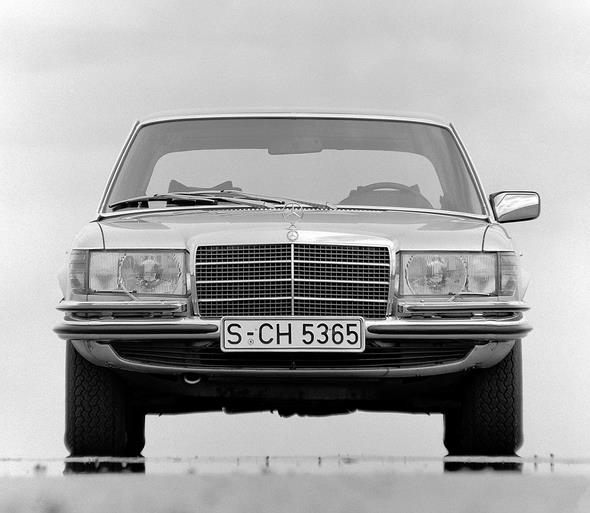
The long version was also available from November 1973 as a 350 SEL and from April 1974 as a 280 SEL.
One noteworthy engineering innovation first featured as standard in the W 116 series saloons was the double-wishbone front suspension with zero-offset steering and anti-dive control, as tested originally in the C 111 experimental vehicle.
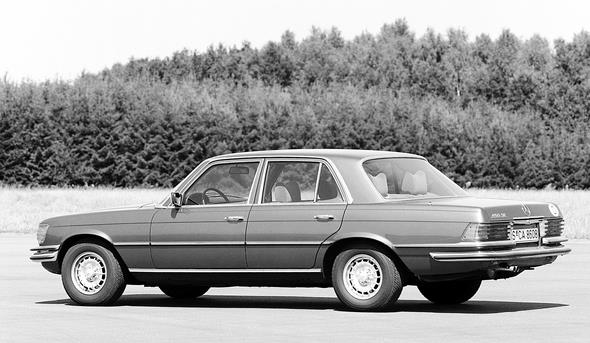
This permitted further dynamic handling improvements. Rear suspension was essentially the same as the design that had by this stage been tried and tested over many years in the Stroke Eight models and which was also in use in the 350 SL.
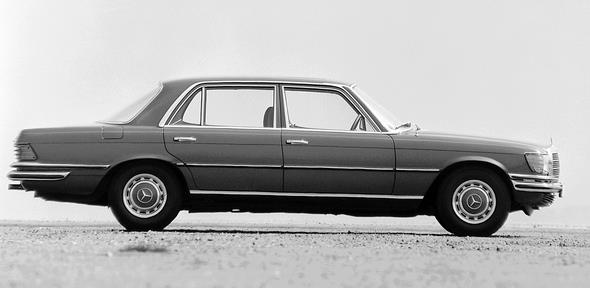
The 4.5-litre models were fitted with a coupled-link axle.
High level of security In terms of passive safety, too, the S-Class was at the forefront of engineering.
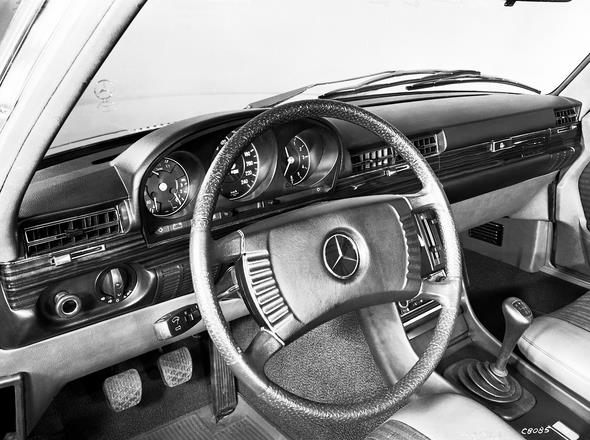
The variety of safety design features integrated for the first time into the 350 SL were of course included without exception in the S-Class saloons.
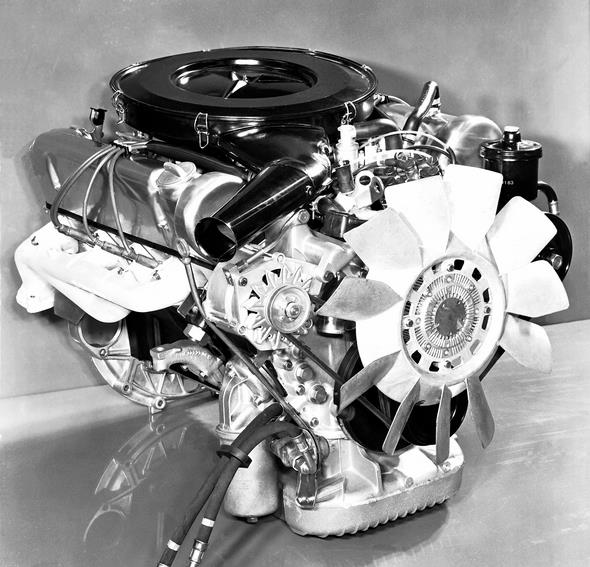
The fuel tank, for example, was no longer positioned in the rear end but above the rear axle for protection in case of accident; in the interior, maximum protection was offered by the heavily padded instrument panel, yielding or recessed switches and levers, and a four-spoke safety steering wheel with impact absorber and broad padded boss.
The most significant improvement over the predecessor series was the even stronger safety passenger cell with stiffened roof-frame design, high-strength rigid roof and door pillars and reinforced doors.
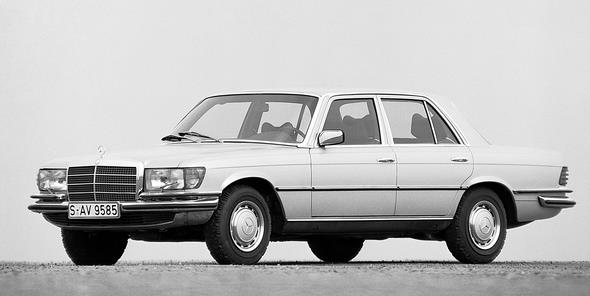
By controlling the deformability of front and rear end it was also possible to improve considerably energy absorption in the front and rear crumple zones.
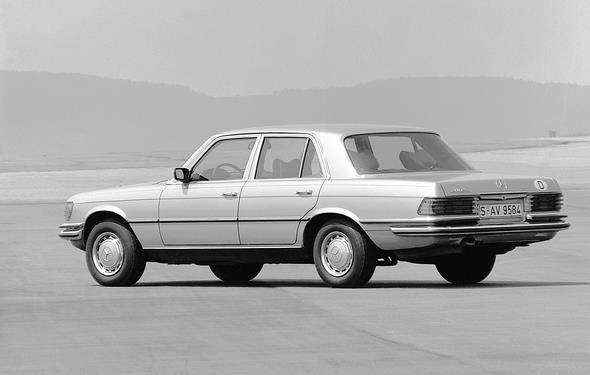
Special wind deflectors on the A-pillars guaranteed good visibility.
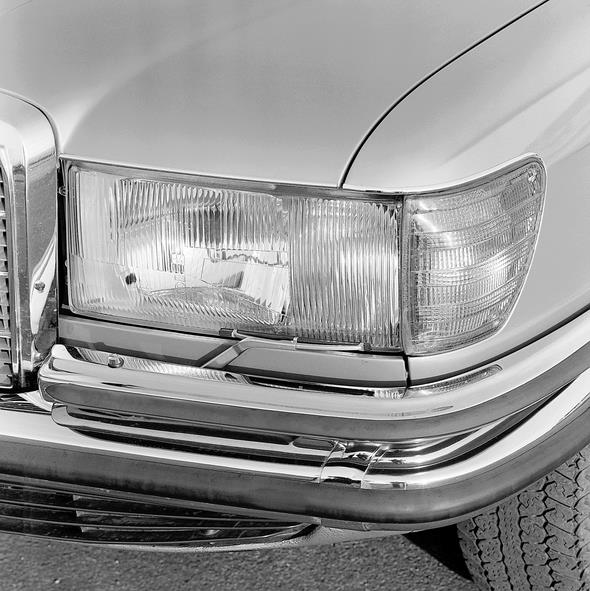
In wet conditions these served as channels for dirty water, keeping the side windows clean in bad weather.
Other safety features included wrap-around turn indicator lamps that provided good visibility even from the sides, and large rear lights, which offered good resistance against soiling thanks to their ribbed surface profile.

The Mercedes-Benz 450 SEL 6.9
In May 1975 the company presented the 450 SEL 6.9 – the new top model in the series and true successor to the Mercedes-Benz 300 SEL 6.3.
The powerful 6.9-liter V8 engine, developed from the highly successful 6.3-liter unit, achieved an output of 286 hp (210 kW) and maximum torque of 56 mkg (549 Newton metres).
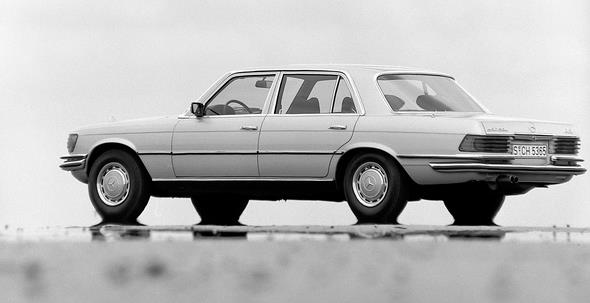
The hydropneumatic suspension with self-levelling – featured for the first time in a Mercedes-Benz passenger car – guaranteed the utmost in ride comfort.
Other special equipment included in the standard specification for the top-of-the-range model were the central locking system, air-conditioning and a headlamp wash/wipe system.
As was the case with its direct predecessor, the 450 SEL 6.9 proved an immediate success; although it was more than twice as expensive as the 350 SE, a total of 7,380 units were built during its four-and-a-half year production period.
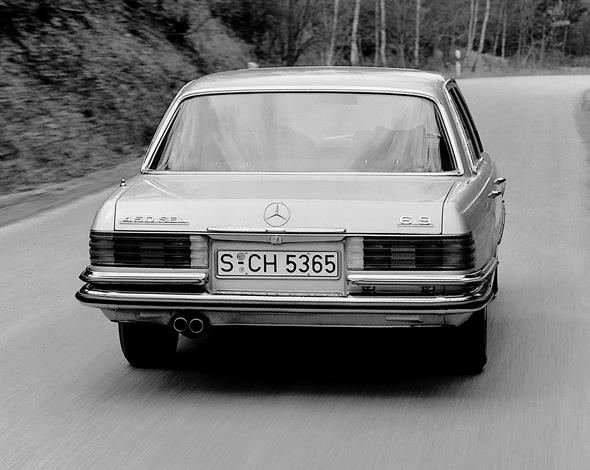
Between November 1975 and February 1976 the direct fuel injection system in the 2.8-liter, 3.5-liter and 4.5-liter injection engines was converted to fall in line with more stringent emissions standards now in force in most European countries.
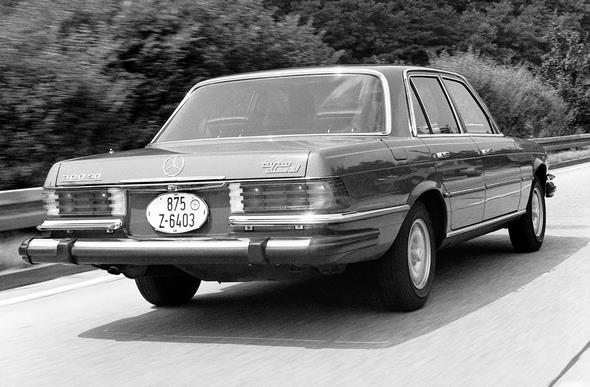
The electronically controlled Bosch “D-Jetronic” was abandoned in favour of the newly developed mechanically controlled Bosch “K-Jetronic”.
In all three cases conversion was achieved with only minor loss in output; at the same time, compression was slightly reduced in the 2.8-liter and 3.5-liter engines.
For ease of maintenance these modifications also included breaker-less transistorized ignition and hydraulic valve clearance compensation for both V8 engines.
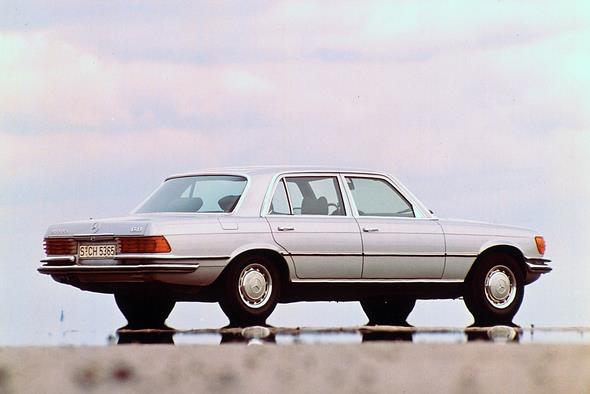
As with the 2.8-liter injection engine, compression was reduced also in the carburettor engine, similarly causing a slight decrease in output.
Two years later, from April 1978, the original output was once again offered in all three models with injection engines.
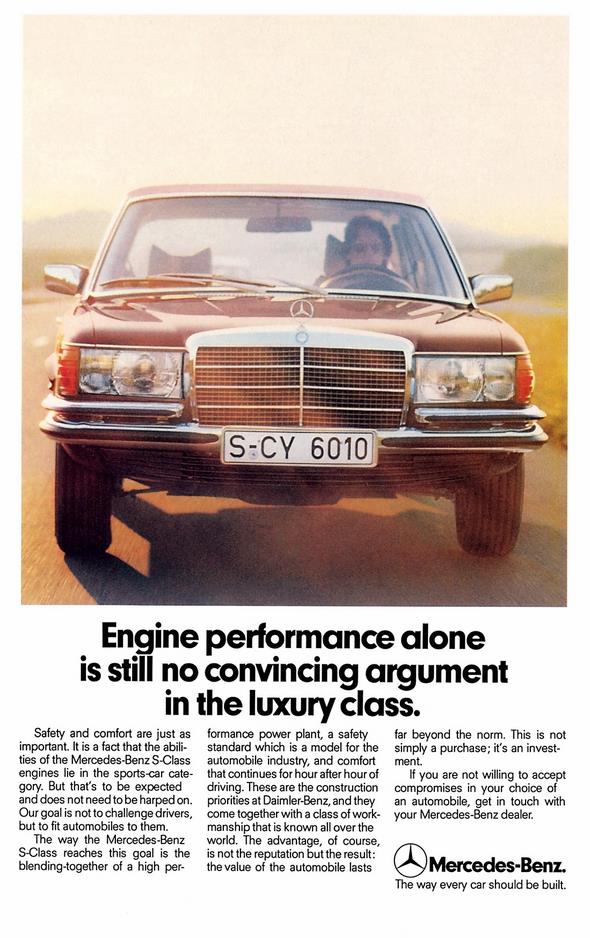
In contrast to the carburettor version, compression in the 2.8-liter injection unit was raised to its old value, and the previous output in the two V8 models was achieved largely by modifications to the exhaust system.
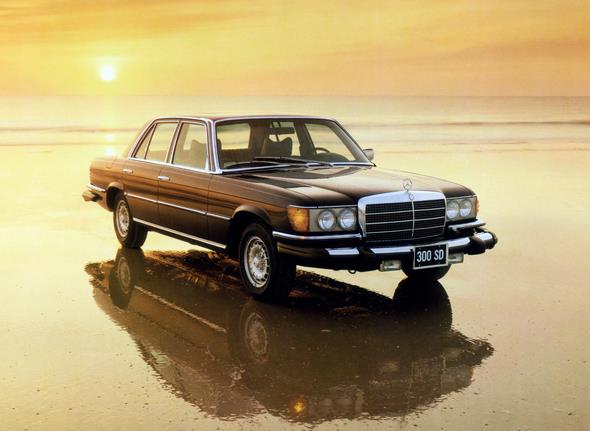
A diesel in the S-Class
In May 1978 the model range in the W 116 series was expanded even further. As the latest addition to the family, the 300 SD attracted just as much attention among connoisseurs as had done the 450 SEL 6.9 three years earlier – although it was positioned at the opposite end of the performance scale.
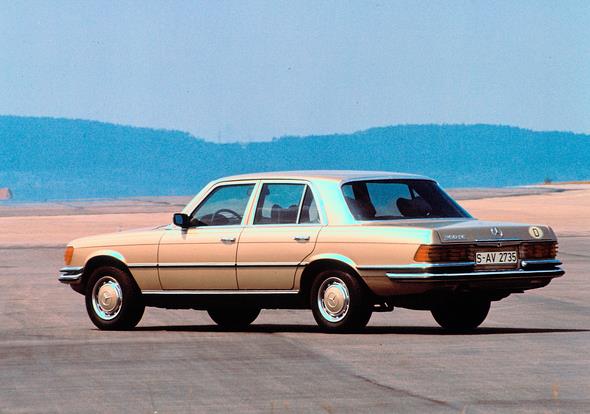
For the first time in the history of this vehicle category, the new S-Class model was powered by a diesel engine.
The 3.0-liter five-cylinder unit, that had proved so successful in the mid-range 240 D 3.0 and 300 D models, was given a turbocharger for its new role, enabling output to be increased to 85 kW (115 hp).
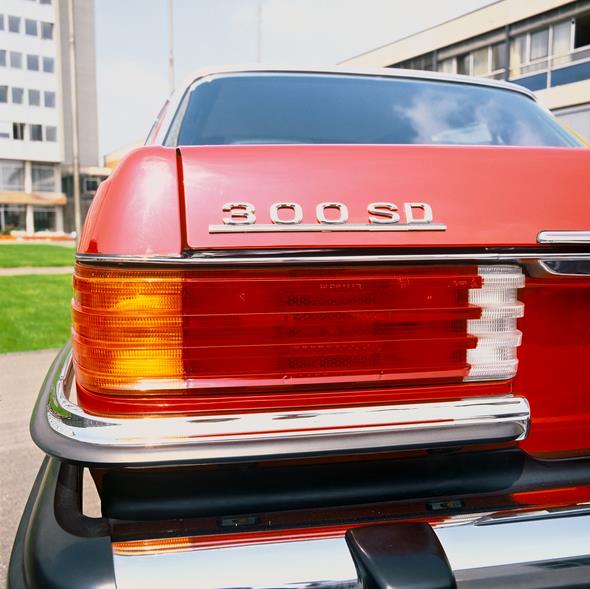
Development of this unusual S-Class variant, which was offered exclusively in the USA and Canada, was begun with the aim of meeting the fuel consumption standards recently introduced by the US government.
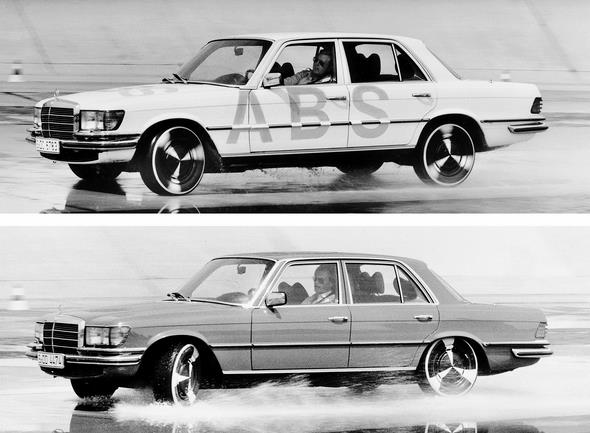
The most decisive factor here was the so-called Corporate Average Fuel Economy, an invention of the Carter administration, which denoted the average fuel consumption of all passenger car models in a manufacturer’s range.
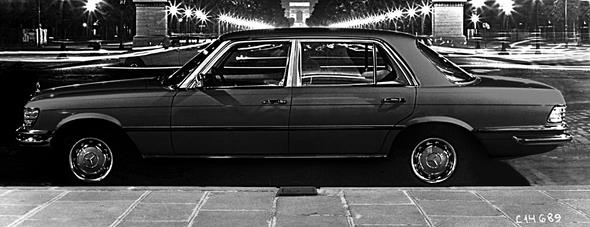
By extending the range to include conventionally economical diesel models it was possible to bring the fleet’s average fuel consumption under the legal limit.
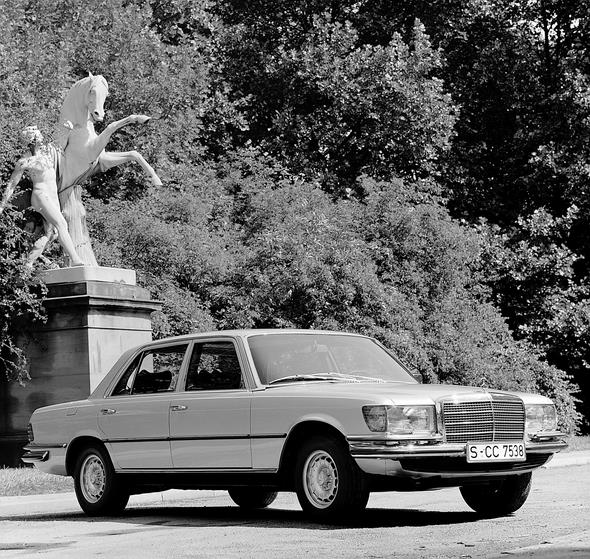
A technical innovation of ground-breaking significance was offered as a world exclusive in the S-Class saloons of the W 116 series from fall 1978: The anti-lock brake system (ABS), developed in collaboration with Bosch, which guaranteed a vehicle’s unrestricted steering response even under emergency braking and thus made a vital contribution to active safety.
Today almost a commonplace and available even in small cars, at the time the market launch of ABS was seen as nothing short of sensational.
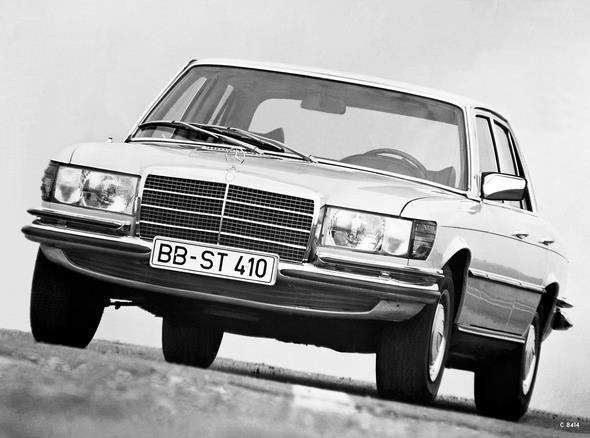
Safety of a rather different nature was offered by the armoured version of the W 116 series. Protection design underwent further improvements based on the sum of experience gained during development of the armoured 280 SEL 3.5.
Taking the eight-cylinder models as a whole – the 350 SE, 350 SEL, 450 SE and 450 SEL – a total of 292 units were built as armoured vehicles for delivery to special customers, including many state institutions in Europe and overseas.
The successors to the first S-Class series – the W 126 models – were presented in September 1979 at the Frankfurt IAA. But that did not put an immediate end to the W 116 series; production was gradually phased out for each model between April and September 1980.
Of the 473,035 units built in this model series, the last vehicle to leave the Sindelfingen plant was a 300 SD.
The W 116 series in the press
Auto, Motor und Sport, Germany, volume 2/1973, on the Mercedes-Benz 350 SE: “The pleasure of driving a Mercedes 350 SE is sadly an expensive one and affordable only by a minority.
This is regrettable, because for the considerable financial outlay one gets not only representation and a status symbol, but also more importantly a wealth of benefits that one would wish for in any car: A high degree of active safety and crashworthiness, perfected body design, outstanding comfort, large reserves of energy, effortless driving and exemplary craftsmanship.
And all these highly desirable features come together to form an overall image in which one thing stands out above all – that this is one of the world’s most perfect cars.”
Car, England, June 1975, on the Mercedes-Benz 450 SEL 6.9: “A car of such speed and weight must have demonstrably good roadholding and handling, and this one is no disappointment in anything from a hairpin to a three-figure-bend: the suspension soaks up the bumps, the transmission is wonderfully smooth and admirably easy to control (either by a sensitive accelerator foot or a hasty hand at the lever), and the steering is servo-assisted in a way that highlights the nearly neutral responses of the vehicle.”
Automobil Revue, Switzerland, May 15, 1975, on the Mercedes-Benz 450 SEL 6.9: “It is a real joy, given the present climate, to witness the launch of a car that offers the connoisseur the utmost in driving pleasure – and at any speed.
The 6.9 is testimony not only to the optimistic outlook of those responsible for its design, but also to their having the courage of their convictions.”
Mercedes-Benz S-Class, W 126 series (1979 to 1991)
In September 1979, Daimler-Benz presented a new S-Class generation at the IAA in Frankfurt.
The range of models available in the W 126 series was comprised initially of seven vehicles: Choice was from four engines (from the 2.8-liter six-cylinder carburettor unit with 115 kW/156 hp to the 5.0-liter V8 light-alloy engine with direct fuel injection and 176 kW/240 hp) and two body variants – in addition to the normal version, a lengthened variant, as had traditionally been the case with premium-segment saloons for generations.
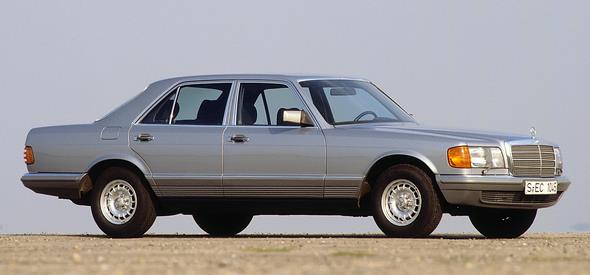
In this case, lengthening of the wheelbase by 140 millimetres was more apparent than otherwise and as usual the extra space served exclusively to increase legroom in the rear and the entry width for the rear doors.
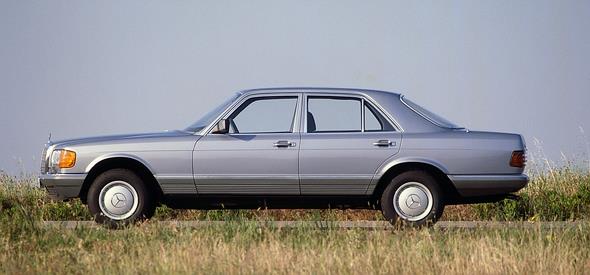
In addition to improving ride comfort and safety, development of the new model series focused on decreasing energy consumption.
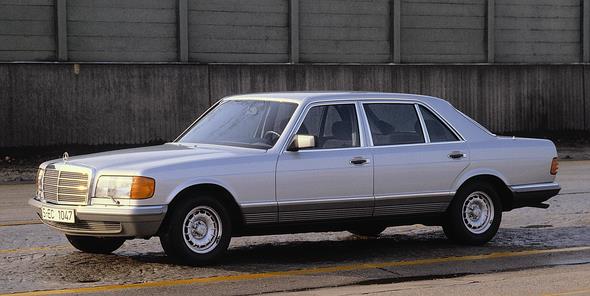
The use of weight-reducing materials and an aerodynamic body optimized in the wind tunnel (cd= 0.36, compared with cd= 0.41 in the W 116 series) helped the new S-Class achieve a ten-percent reduction in fuel over its predecessor models.
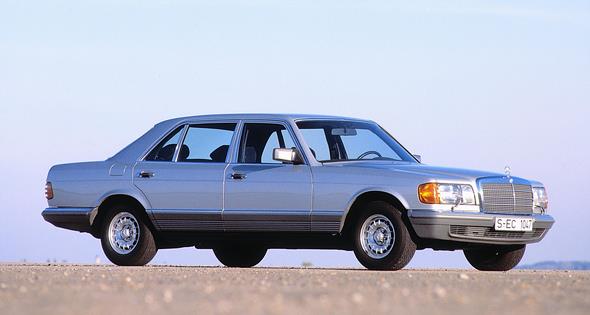
The two eight-cylinder engines of the predecessor series were replaced with two redesigned units with larger displacement and light-alloy crankcase.
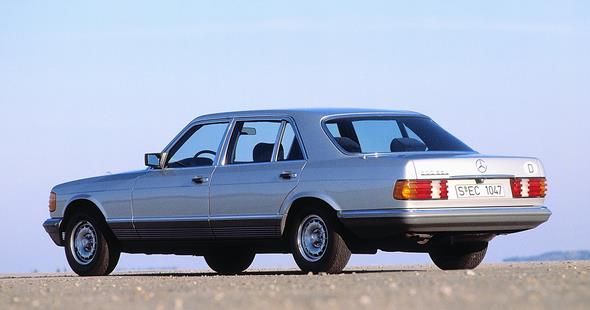
The 5.0-liter engine, which replaced the 4.5-liter cast iron unit, was already familiar as the power unit from the 450 SLC 5.0, while the 3.8-liter light-alloy engine was developed based on the long-serving 3.5-liter V8 with cast iron block.
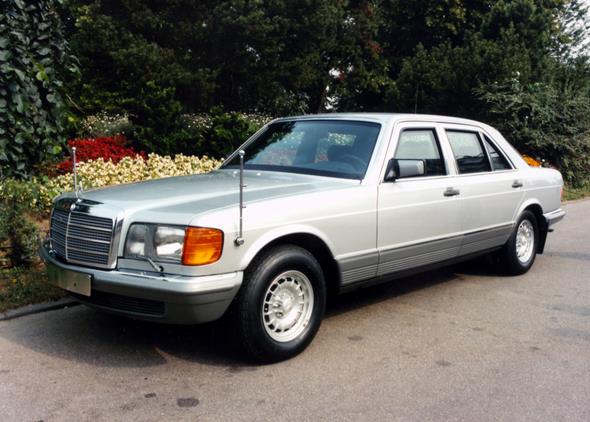
With both higher output and reduced weight, the new V8 engines could now achieve improved performance while at the same time using less fuel.
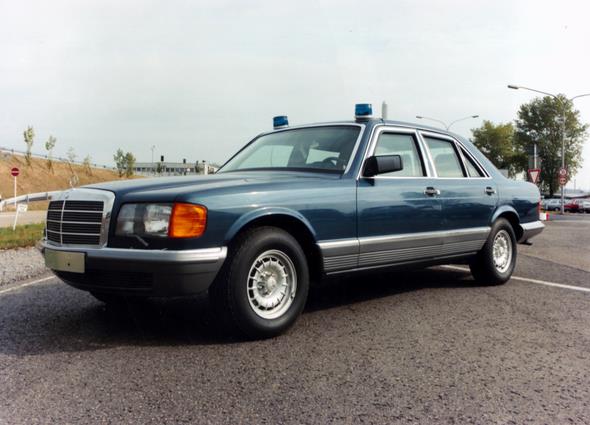
The carburettor and injection versions of the 2.8-liter six-cylinder remained in the range unchanged.
Diesel for export
The W 126 series also saw development of a diesel version for export to the USA.
Like its predecessors, the 300 SD Turbodiesel offered a turbocharged 3.0-liter five-cylinder engine, though with output now increased by ten hp (7.4 kW) to 125 hp (92 kW).
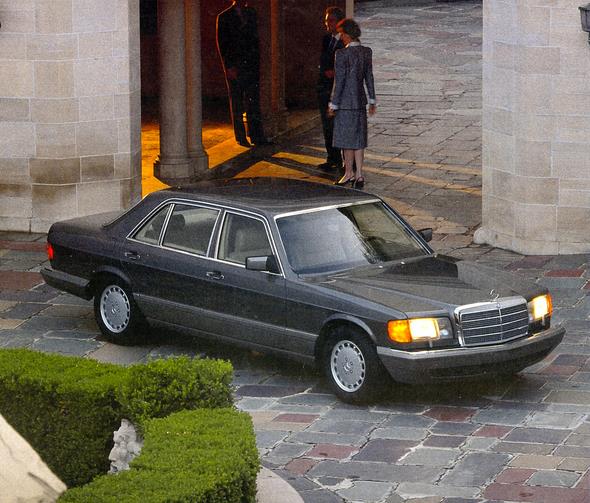
Chassis design was essentially the same as for predecessor models.
The new S-Class saloons also featured a diagonal swing-axle at the rear and double-wishbone front suspension with zero-offset steering. The 5.0-litre models were again fitted with the coupled-link axle.
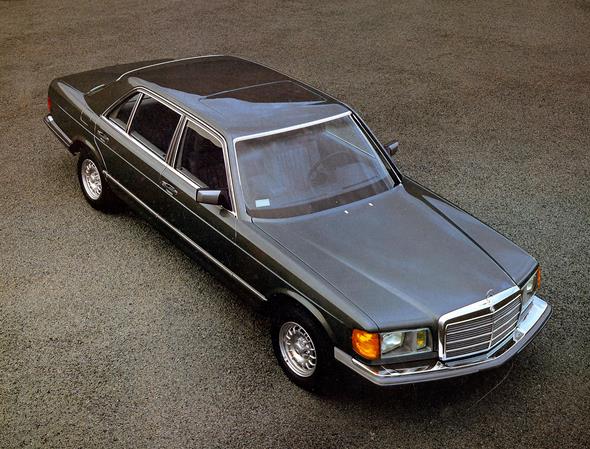
The body design incorporated state-of-the-art findings in safety research. Thanks to its new design principles the passenger compartment was now able to withstand the so-called “offset crash” unscathed at a speed of 55 km/h.
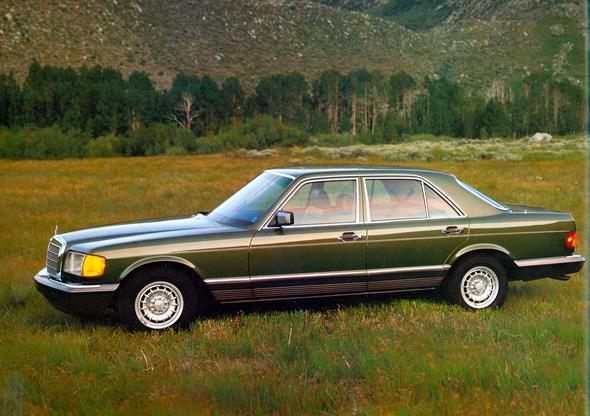
The W 126-series saloons were the first production cars worldwide to meet the criteria of the frontal offset crash.
Many of the characteristic design elements of the S-Class are to be found beneath the waistline.
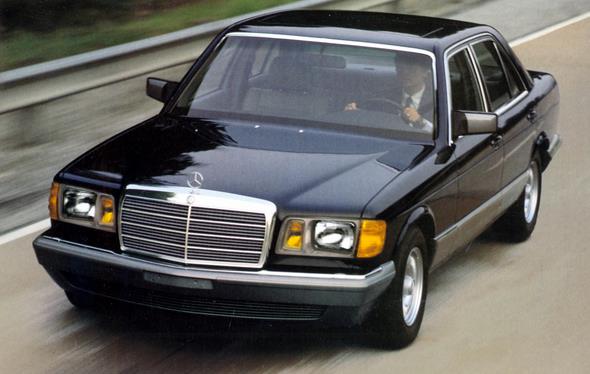
For the first time, a Mercedes-Benz passenger car had no bumper bars in the classical sense, having instead generously proportioned plastic-coated bumpers that were seamlessly integrated into the car’s front and rear aprons.
Broad lateral protective strips made of plastic created a visual link between front and rear aprons, positioned at bumper height between the wheel arches.
A coupe joins the range
At the IAA in Frankfurt of fall 1981, two years after the debut of the W 126 series, an elegant coupe was added to the family, available only with eight-cylinder engines.
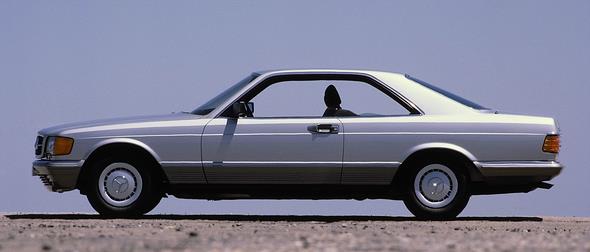
Both V8 units underwent comprehensive revision as part of the recently initiated “Mercedes-Benz Energy Concept”, a program geared to reducing fuel consumption and harmful emissions.
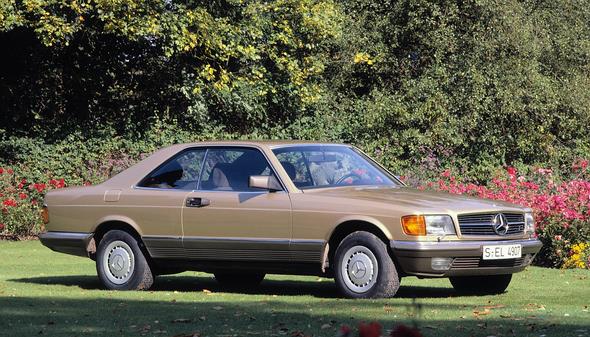
In addition to an increase in compression, the list of improvements included camshafts with modified valve timing, air-bathed injection valves and electronic idle speed control.
Camshafts with modified valve timing enabled maximum torque to be achieved at a lower engine speed and in the case of the 3.8-liter engine torque was even increased.
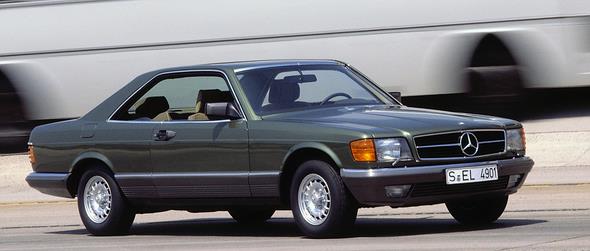
This unit was subjected to particularly thorough revision: In order to achieve a more favourable volume-to-surface ratio, the bore was reduced and the stroke increased.
The modified 3.8-liter V8 thus benefited from a slightly larger displacement. But by way of compensation for their significantly better fuel economy, the two eight-cylinder units were obliged to accept a minor drop in output.
In both cases, rear axle ratios were tuned to meet the modified characteristics of the engines and were significantly longer.
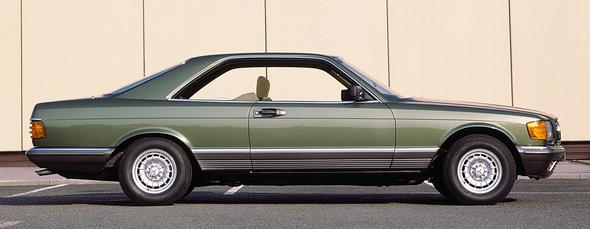
And the two six-cylinder units also saw a whole series of minor modifications that likewise led to fuel economies, even if these were less dramatic. These measures did not affect power output.
Four years after the launch of the Energy Concept the company carried out a comprehensive model refinement package, so that in September 1985, once again at the IAA in Frankfurt, it was able to introduce a completely revised S-Class line-up.
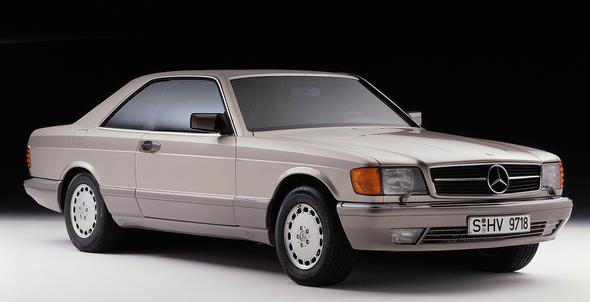
Visual aspects were subjected to moderate revision; first and foremost this affected the bumpers and protective side moulding, but also the wheels, which were changed from 14 to 15 inches.
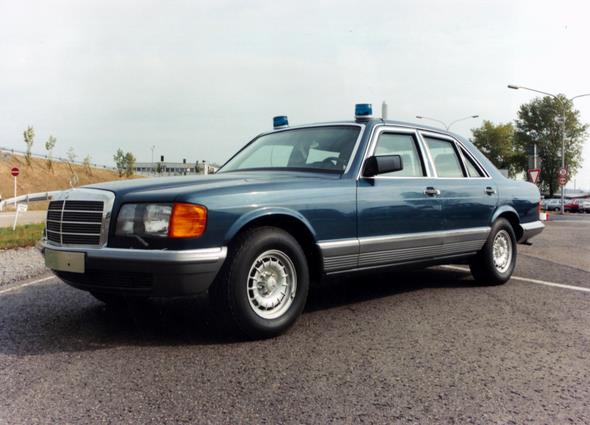
This also brought with it a safety element, since it allowed larger brake discs to be fitted. Top priority, however, was give to the restructuring of the engine range.
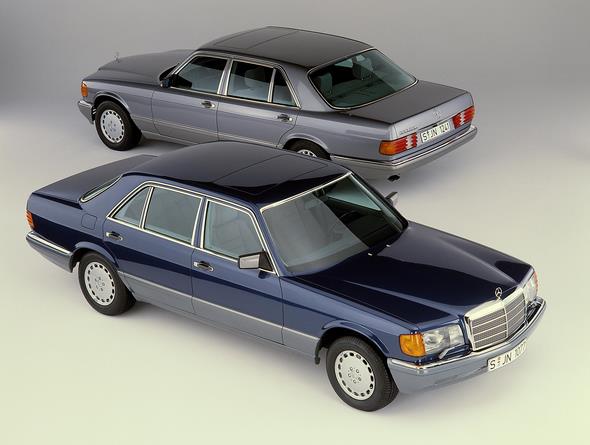
Two newly-designed six-cylinder units, which had been premiered nine months earlier in the mid-range W 124 series, now replaced the trusty 2.8-liter M 110 engine.
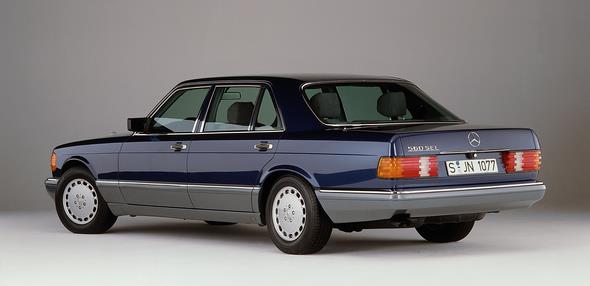
In the place of the carburettor version came a 2.6-liter direct injection unit, while the parallel-developed 3.0-liter unit became successor to the injection variant of the M 110.
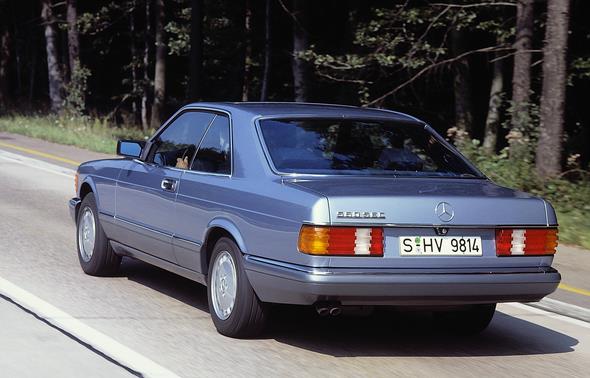
A new addition to the range was the 4.2-liter V8 engine, developed by increasing the bore of the 3.8-liter unit and now fitted to the S-Class saloon, the SEC coupe and the SL.

The 5.0-liter engine was also modified. Now equipped with an electronic ignition system and the electro-mechanically controlled Bosch “KE Jetronic” injection system, it generated an output of 180 kW (245 hp).
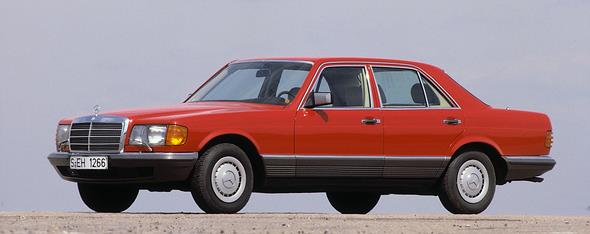
5.6-liter displacement
The most spectacular innovation in the engine range was a 5.6-liter eight-cylinder unit, which was developed by lengthening the stroke of the 5.0-liter V8 and which unleashed an output of 200 kW (272 hp).
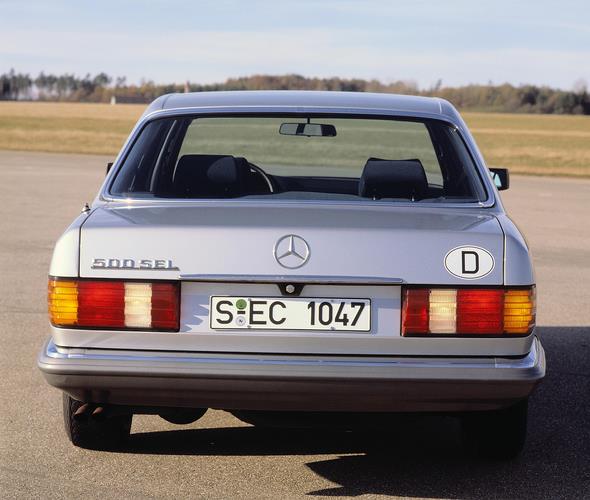
If required, an even more highly compressed version was also available that delivered a mighty 221 kW (300 hp), although it was not possible to combine this unit with a closed-loop emission control system.
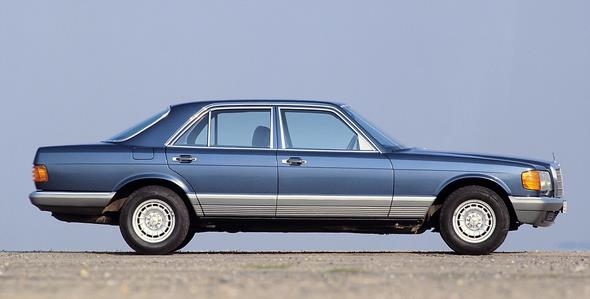
But even without catalytic converter this so-called ECE version met emissions standards set down by the Economic Commission for Europe. The models fitted with this engine variant – the 560 SEL and 560 SEC – were in their day the most powerful Mercedes-Benz production cars ever built.
All variants in the revised model range – with the exception of the 560 SEL and 560 SEC in the ECE version – were available on request with a closed-loop emission control system with three-way catalytic converter.
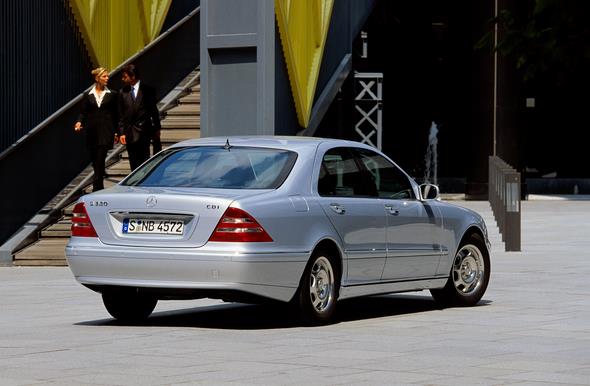
In each case the series version was the so-called “catalytic converter retrofit version”, for which the vehicle was delivered without catalytic converter and oxygen sensor, but with the multi-functional mixture preparation and ignition system.
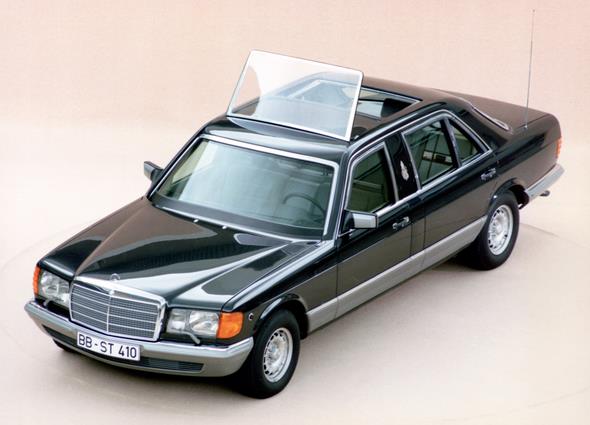
These “retrofit versions” could be fitted with the closed-loop catalytic converter without difficulty at a later date. This gave customers maximum flexibility in choosing the moment to convert their vehicle – a not insignificant advantage, given that unleaded gasoline was not universally available at the time.
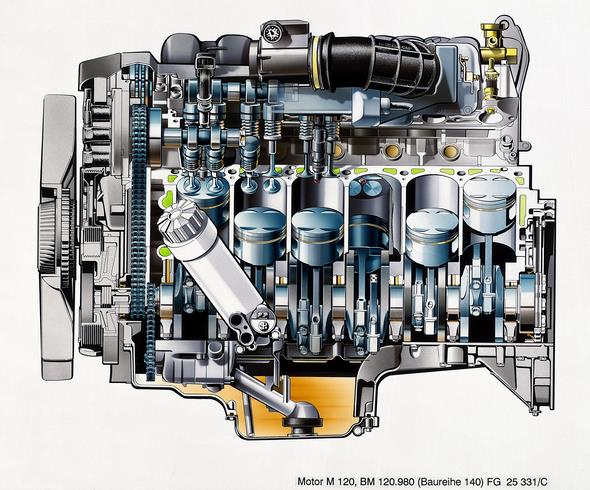
From September 1986 the closed-loop catalytic converter was standard equipment on all Mercedes-Benz passenger car models with gasoline engines; the retrofit versions were available until August 1989 – with a corresponding price discount.
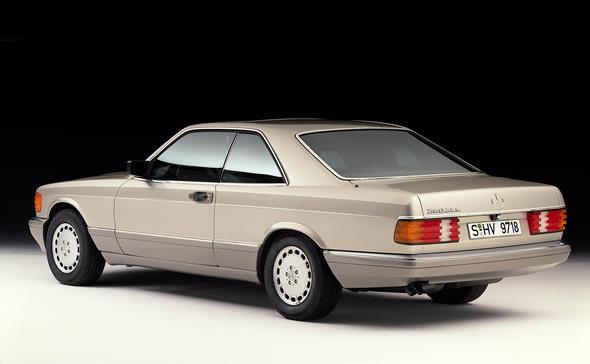
With the introduction of the new model range, the diesel model – which was still reserved exclusively for US export – was replaced by a modified variant.
The new 300 SDL was presented with the additional space of the long version and featured an entirely new design of engine.
This was based on the familiar 3.0-liter six-cylinder unit from the mid-range W 124 series, although this too was equipped with a turbocharger.
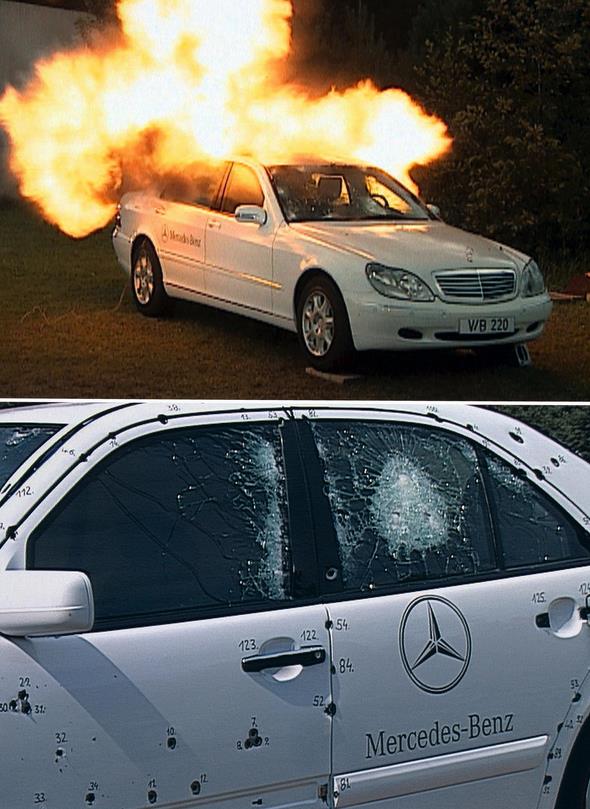
The six-cylinder turbodiesel now delivered 110 kW (150 hp) – 44 kW (60 hp) more than the basic version without supercharger and almost 22 kW (30 hp) more than the five-cylinder engine of the predecessor model.
As was expected, the running gear of the facelifted models displayed no fundamental modifications. Nevertheless, the rear axle design was modified in a few details in order to improve ride comfort and reduce engine noise.
In addition, all models in the W 126 series were now fitted with 15-inch wheels and larger brakes to match.
The design of the optional light-alloy wheels – these were only standard equipment on the 560 SEL and 560 SEC – was updated to match those of the compact-class and mid-range model series.
Minor modifications
The other stylistic modifications carried out on the improved models of the W 126 series not only served to update the design, but were also integrated for specific technical reasons.
By lowering the aprons it was possible to further reduce front axle lift forces and improve airflow at the rear. This also had the effect of further enhancing directional stability and road adhesion when moving at speed, an aspect of considerable importance with respect to the performance of the new top-of-the-range 560 SEL.
The lateral protective strips were now smooth in design rather than grooved, and like the bumper system they reached down lower and included additional trim on the frame side members.
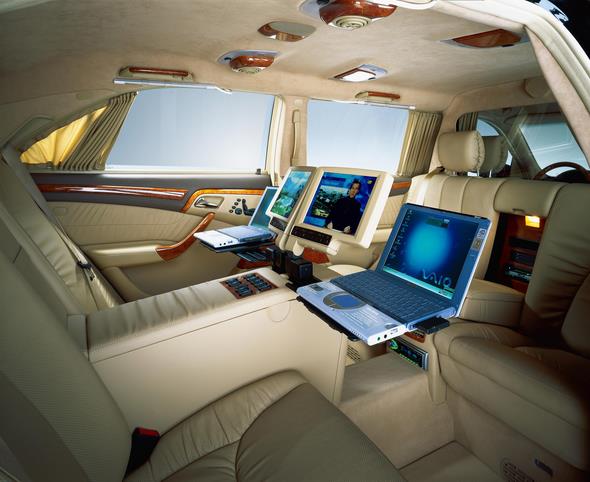
As the 5.6-liter models came with wider 215/65 VR 15 tires as standard, unlike their lower-powered sister models, front apron and fender beading were modified in shape in order to create the necessary lateral clearance for the front wheels.
In September 1987, when the S-Class encountered an unusually chilly easterly wind in the form of the BMW 750 i, higher-performance variants of all V8 engines were introduced.
Compression ratios in all cases were increased to 10:1, and additional measures were taken to improve performance by between six and ten percent depending on the model.
The effect was even clearer in the case of the variants with catalytic converters: By optimizing the emission control equipment the designers succeeded in significantly reducing power loss due to the catalytic converter.
The ECE version of the 5.6-liter V8 was discontinued without a replacement, since as a result of the treatment to increase output the catalytic converter retrofit version was now also capable of developing 221 kW (300 hp).
At the Paris Motor Show in September 1988, the model range was expanded to include the 560 SE from the W 126 series, thus making the 5.6-liter engine available in a saloon with conventional wheelbase.
A new diesel variant
From June 1989 a new variant with diesel engine was produced, although this too was only available in the USA. Production of the previous 300 SDL had already come to an end in September 1987.
The 350 SDL model had a new 3.5-liter six-cylinder engine that had been developed by increasing the bore and stroke of the tried-and-tested 3.0-liter unit.
The new turbodiesel was designed more for torque than output and, with exhaust gas recirculation and oxidation catalyst, generated 10 kW (14 hp) less than its predecessor in spite of the larger displacement.
But the 350 SDL’s 100 kW (136 hp) was more than adequate, especially given the speed limits that applied throughout the USA. Maximum torque was increased by almost 15 percent and was reached at just 2000/min.
In June 1990 the 350 SD with a conventional wheelbase was introduced to go alongside the 350 SDL.
As was the case with the predecessor series W 116, the eight-cylinder W 126 models were also available as armoured variants. Protection design had been further perfected after intensive development work and a total of 1,465 units were produced.
Two 500 SEL models are of particularly interest here, both with a wheelbase extended by 200 millimetres and roof raised by 30 millimetres.
The first of these was built in January 1983 and served as an additional representational vehicle in the company’s own car pool.
The second was built on commission from the Vatican for the Holy Father and handed over to Pope John Paul II in August 1985.

As successors to the W 126 series, eight W 140 series saloons were introduced at the Geneva Motor Show in March 1991. Although the new models went into production only a month later, the plant continued to turn out saloons of the 126 series for export for a while.
Production of most variants came to an end between August and October 1991, although the last few armoured models did not come off the production line until April 1992.
During the entire 12-year production period a total of 818,036 saloons left the production lines in Sindelfingen, 97,546 of them with diesel engines.
That made the W 126 the most successful premium-class series in the history of the company.
The W 126 series in the press
Auto, Motor und Sport, Germany, issue 22/1979, on the S-Class from the W 126 series: “On driving you quickly realise that at Daimler-Benz quietness is part of civil responsibility. Any mechanical noise – even with the six-cylinders – remains discreetly in the background. Moreover, it is nothing short of striking to note just how thoroughly the Mercedes developers have managed to eliminate wind noise.”
Road & Track, USA, February 1980, on the S-Class of the W 126 series:
“Hurrying back through the woods over a rather bumpy stretch of road, I was reminded of how well a Mercedes rides and handles. A live-axle car could be made to do the latter, but not without scrambling your brains. The W 126 does a marvelous job at both tasks and stops quickly too.”
Frankfurter Allgemeine Zeitung, Germany, May 24, 1986, on the Mercedes-Benz 300 SE:
“The 300 SE holds its line like a ship on a fixed course. Any unevenness in the road surface is swallowed with ease by the springs and dampers. No other car achieves such a degree of comfort out of steel and rubber. The large steering wheel allows you to corner with caution as well as with joyful abandon. It does everything you want. The running gear reveals unusually high reserves of safety.”
Mercedes-Benz S-Class, W 140 series (1991 to 1998)
In March 1991 the new S-Class generation (W 140 series) made its debut at the Geneva Motor Show. The body design incorporated the typical traditional Mercedes-Benz stylistic elements and thus fitted unobtrusively into the homogenous design of the passenger car model series.
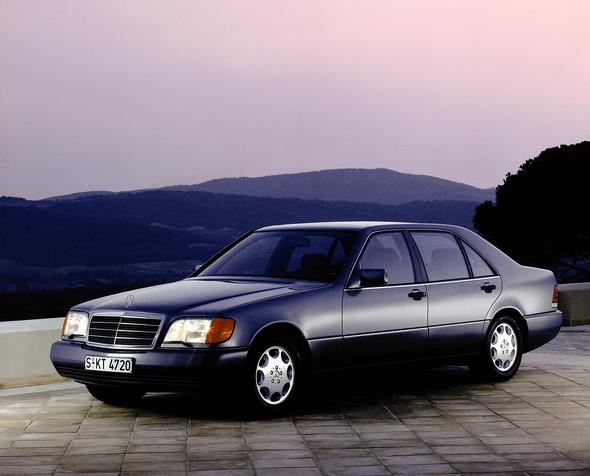
As had already been the case with the SL models in the R 129 series, with the new S-Class the distinctive trademark radiator grille was given a new stylistic interpretation while retaining the traditional basic shape.
This variation on a classic theme was designated the “integrated radiator” and with its much narrower chrome frame the radiator shell was organically integrated into the engine lid.
For the first time, the Mercedes star was positioned not on top of the radiator grille, but slightly to the rear on the engine hood.
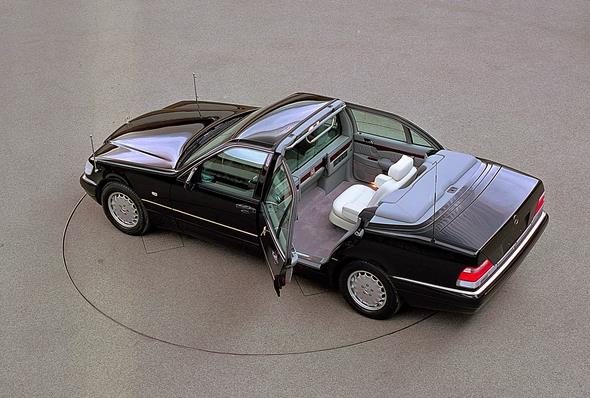
The overall aim of the design concept of the new S-Class generation was to achieve a high degree of aerodynamic quality while at the same time respecting a maximum of everyday practicality.
As with the predecessor models of the W 126 series and generations of Mercedes-Benz premium-class series before them, the normal version was also accompanied by a long-wheelbase variant, in which the additional 100 millimetres served exclusively to increase legroom in the rear.
As far as the engine was concerned, initially four units were available on the domestic market, of which only the 5.0-liter V8 four-valve M 119 was an old and familiar friend.
As with the 500 E of the mid-range W 124 series, the engine used here was the so-called Einheitsdeckmotor (standard engine) – a crankcase for both the 4.2 and 5.0-litre assemblies – whose fully-electronic Bosch “LH Jetronic” injection system was controlled via a hot-wire air mass sensor.

The other three engines were newly developed: Like the 5.0-liter unit, the 4.2-liter four-valve V8 was based on the 4.2-liter two-valve engine, and the six-cylinder in-line engine with 3.2-liter displacement was based on the 3.0-liter four-valve unit introduced two years earlier.
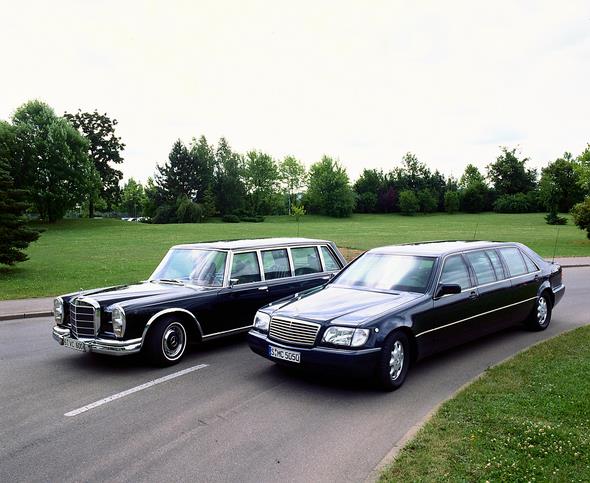
An interesting detail to note here is that the model designation of the 3.2-liter and 4.2-liter models did not reflect exactly the displacement as had always been the case in the past.
Instead, for the sake of homogeneity the designations 300 SE/SEL and 400 SE/SEL were chosen.
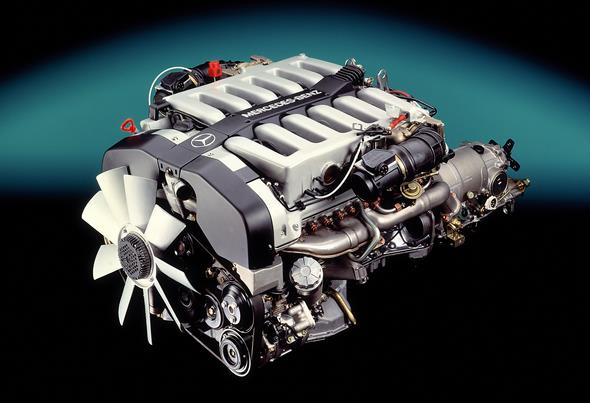
The twelve-cylinder
The 6.0-liter V12 M 120 engine was an entirely new design, not just the first series-produced twelve-cylinder Mercedes-Benz passenger car, but also the most powerful Mercedes-Benz car engine of its day, with a rated power output of 300 kW (408 hp).
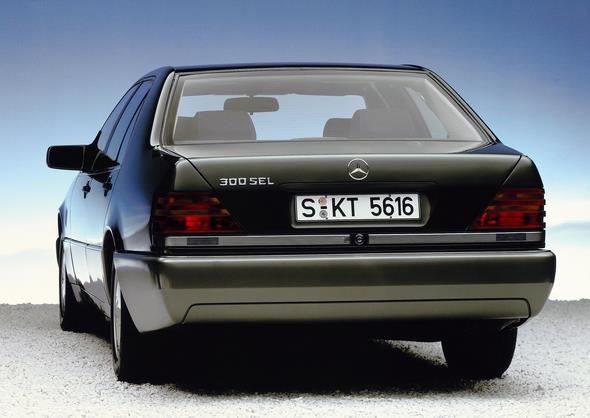
With a peak torque of 580 Newton metres, it reached the 500 Newton metres mark at 1600/min. As with the six-cylinder and the two V8 engines, the twelve-cylinder was also equipped with four-valve technology, variable intake camshaft and an electronic injection system with hot-wire air mass sensor.
With all engines a high priority was placed on minimizing exhaust emissions and reducing fuel consumption. The new fully electronic ignition system calculated the optimum ignition point from 300 ignition maps, tuned for each cylinder individually and to the knock limit in each case.
The M 120 was the only twelve-cylinder engine worldwide to feature this cylinder-selective anti-knock control. This alone made possible the high compression ratio of 10:1, necessary for optimum use of fuel.
Engine and drive management was also completely new. Here, all control modules communicated with one another via a common data channel, which meant that the control units were jointly active.
This served for rapidly warming up the catalytic converters on cold-starting the engine, for example, as well as for acceleration skid control ASR and for the new engine friction torque control, which maintained handling stability during power-off situations on slippery road surfaces.
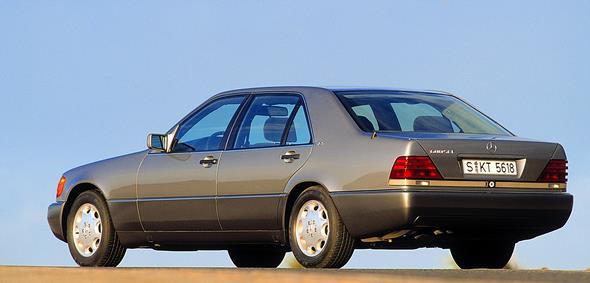
The V12 offered the world’s largest catalytic converter unit for passenger cars. With a seven-litre volume in order to avoid any excess fuel consumption on account of the catalytic converter, it ensured a high degree of long-term stability.
Thanks to an innovative concept involving a double-walled and triple-insulated exhaust manifold, as well as double-walled pipes, the ceramic catalytic converters – embedded in insulating expandable matting – reached the optimum operating temperature in a very short time.
Environmental compatibility
In addition to optimizing and reducing exhaust emissions, the W 140 series also featured a number of other details that made it a pioneer for environmentally compatible automotive production.
It heralded the age of the CFC-free (chlorofluorocarbons) car and set new standards in terms of recycling. The plastic components used were not only recyclable and clearly identifiable, they were also to a large extent manufactured using regranulated plastics.
In 1992 the W 140 series won an environmental award from the US Environmental Protection Agency, the “Stratospheric Ozone Protection Award.”
Apart from reducing fuel consumption and optimizing environmental compatibility, development of the W 140 series placed a special emphasis on raising comfort and safety to new levels of perfection.
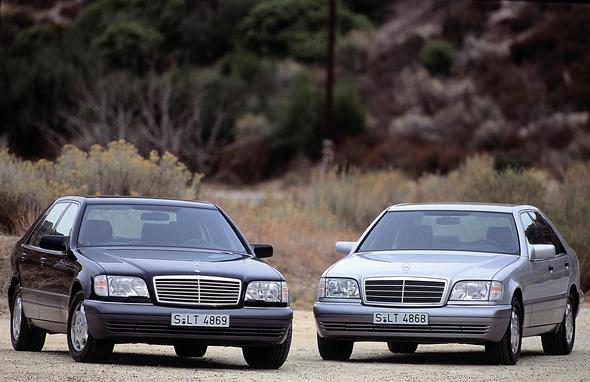
In this respect, the meticulous design and coordination of the running gear played a particular role. A newly developed double wishbone front axle, with the main point of load application mounted on a subframe, provided front suspension – a system designed to isolate the body from audible and perceptible vibrations.
Rear suspension was derived from the multi-link independent suspension of the other passenger car series, although radically revised in terms of wheel location and modified in line with the special requirements of the S-Class.
To take account of the significantly greater longitudinal and transverse forces, the link geometry was also redesigned. Of particular interest was the crossed design of the upper links, which allowed axle space to be kept to a minimum in spite of the long control arms.
In terms of active safety the S-Class saloons in the W 140 series were known for their exceptionally good straight-line stability even on uneven road surfaces, their low crosswind sensitivity, precise and responsive steering and handling which remained relatively unaffected by the size of payload.
The brake system for the eight and twelve-cylinder models was a fundamental innovation. By distributing more braking power to the rear wheels, it was possible to improve the fade resistance of the brake system and reduce wear to the front wheel brakes.
High degree of ride comfort
Ride comfort in the W 140 series was improved significantly once again. Any tyre noise and vibrations transmitted to the passenger cell were largely reduced, the pitching motion on moving off and braking was minimized, rolling motion on cornering or uneven road surfaces was reduced and the steering was made virtually insensitive to jolts transmitted from the road.
A so-called “parameter steering” with speed-sensitive steering moment was fitted as standard to the eight and twelve-cylinder variants, reducing the steering effort required by the driver at low speeds, for example when parking.
Safety had already been taken to high standards in the predecessor model series, but here numerous measures achieved further improvements.
The new body structure, for example, provided even more safety in all types of accidents. And a series of small design appointments designed to reduce hazards from potential impact points also gave added protection to other road users.
The first soundproofed glass windows to be fitted to a passenger car series also made a significant contribution to improving comfort and incorporated a range of safety and comfort features.
They avoided the tendency to fog or ice up and reduced condensation, gave better heat insulation as well as soundproofing from external noise, improved external air flow and eliminated wind noise caused by window seals.
Two further design details – folding exterior mirrors and extendable guide rods to help with reversing – gave drivers additional assistance when manoeuvring in small spaces with poor visibility.
The electrically-operated exterior mirrors could be folded back to gain extra space when manoeuvring in tight situations by means of a centrally-positioned switch on the centre console, the same switch serving also to angle the mirrors correctly.
In order to assist with judging distances to obstacles when performing reversing manoeuvres, two extendable guide rods were integrated into the rear fenders to left and right.
Two seconds after selecting reverse gear, the pneumatically operated 65-millimeter-long chrome rods automatically extended vertically, returning again eight seconds after a new gear had been selected.
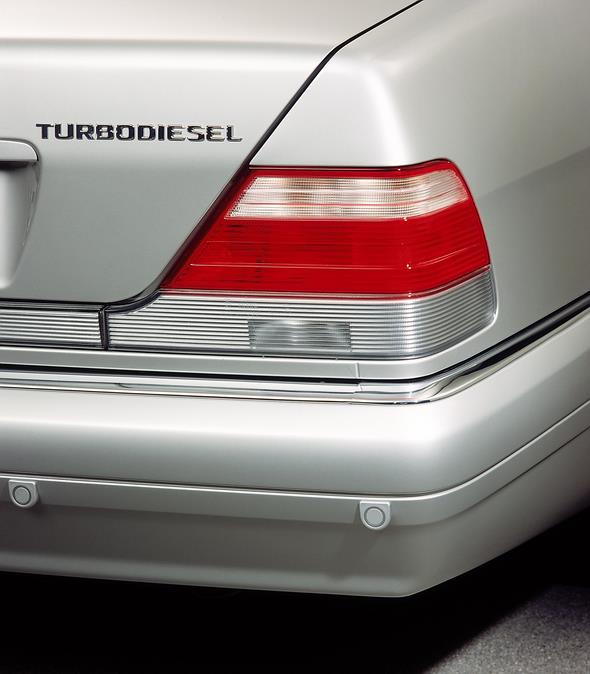
Diesel for Europe
At the Paris Motor Show in October 1992, the 300 SE 2.8 and 300 SD Turbodiesel models were introduced, adding two cheaper and particularly economical variants to the S-Class range.
The 300 SD attracted particular attention – a vehicle that had been exported to the USA since October 1991, but which was now the first diesel model in the S-Class to become available in Europe.
The 300 SD was powered by a 3.5-liter six-cylinder engine with exhaust-gas turbocharger, a unit which was in principle the same as the one used in the predecessor model from the W 126 series, but now in a revised version delivering 110 kW (150 hp).
Like the 300 SE, the second new arrival, the 300 SE 2.8, offered a six-cylinder in-line unit with four-valve technology – also a member of the M 104 family of engines.
The newly developed 2.8 litre variant was used from the same point in time in the W 124 series also and was equipped with a microprocessor-controlled direct injection system in which the hot-wire air mass sensor had been replaced by a hot-film air flow sensor.
In addition to the two new models, the eight and twelve-cylinder versions appeared in Paris with revised engines. All three units did away with mixture enrichment under full load, resulting in a minor loss of output but bringing benefits in terms of emissions.
In June 1993 the model designations were changed to come in line with other series in the passenger car range; the “S” was now placed before the three-figure number, and suffixes such as “E”, “D” and “L” were omitted.
The 500 SE, for example, became the S 500, and according to the new system of nomenclature the 600 SEL was renamed the S 600 long.
Ever since, the trunk lid has documented only the class and engine displacement and not the body variant (normal or long-wheelbase version) – this was entirely apparent to anyone taking a closer look.
The most significant changes came in redesignating the 4.2-liter and six-cylinder models. Instead of the figures used hitherto, which had been rounded off to full hundreds in order to enhance the uniformity of the overall image, the figures used corresponded to the actual displacement values.
Thus the 300 SE for example became the S 320 and the 300 SD was now known as the S 350 Turbodiesel. In addition to these purely formal changes, the two 3.2-liter models also benefited from a number of technical improvements.
The previously used engine was replaced with a revised version that had already been in service since October 1992 in the W 124 mid-range series and now also featured a variable-resonance intake manifold and a direct injection system with hot-film air flow sensor.
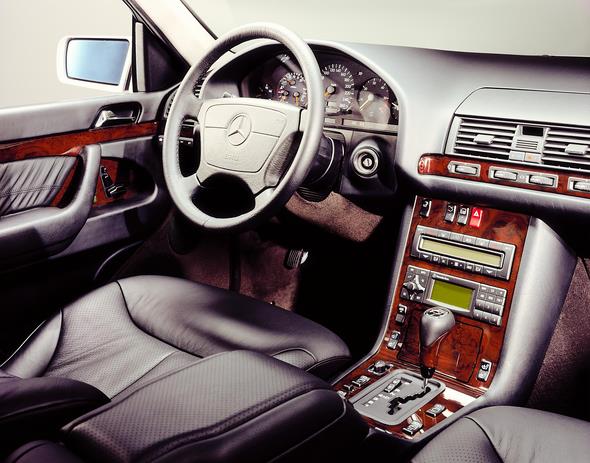
These improvements permitted an increase in torque and meant both maximum output and maximum torque could be achieved at lower engine speeds.
Thanks also to an additional reduction in friction losses, fuel consumption was reduced by a total of 7.5 percent and overall performance marginally improved.
Discreet revisions
At the Geneva Motor Show of March 1994 the S-Class saloons were presented with discreet stylistic modifications. A series of modified details gave the optical illusion of a lighter, better proportioned and more dynamic appearance – even though external dimensions remained unchanged.
This was achieved by a distinctive “tucking-in” of the lower parts of the bumpers and side skirts and by the horizontal subdivision of these surfaces by means of a beading running all the way round.
The effect was reinforced by modifying the design of the headlamps and radiator protection grille.
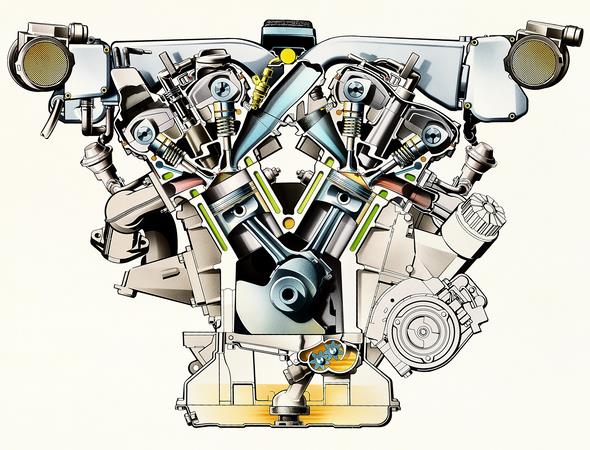
In the modified headlamps with optimized variable-focus reflectors, which increased light output by 60 percent, the dipped-beam compartment was no longer separated by a central bar from the high-beam compartment, thus lending the illusion of greater breadth.
This impression was underlined by the addition of colourless glass covers for the front turn indicator lamps. The six and eight-cylinder models were also given a newly designed, more slender radiator grille with a vertical articulation at the centre.
For the V12 models there was also a special version with chrome-plated transverse fins and appreciably broader chrome frame.
Formal modifications to the rear end were also a significant factor in the harmonious overall image of the S-Class. For example, the lower radii of the trunk lid joints were rounded off in the same style as the coupe models.
The taillight band was made broader beneath the rear lamps and shaped to fit the new bi-chromatic design of the rear lights.
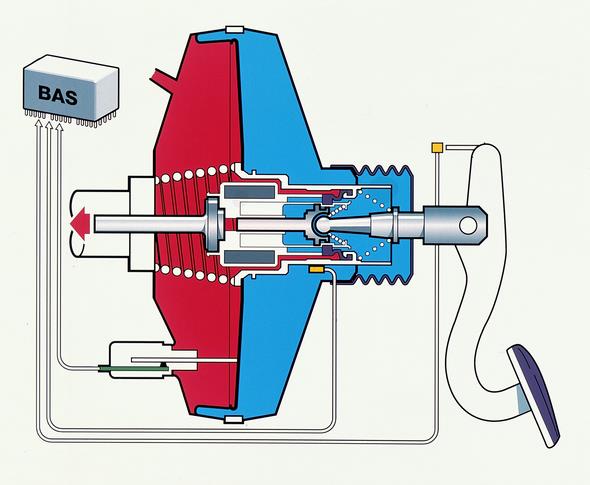
This served to flatten off the height of the trunk and to make the rear end as a whole appear broader and lower set.
From May 1995 the ultrasonic reversing aid PARKTRONIC was available as an option. Ultrasonic signals emitted by the system were reflected by any obstacle encountered and the distance between vehicle and obstacle was then calculated by an electronic control unit.
Transmitters and receivers of the ultrasonic signals were combined in sensors integrated into front and rear bumpers, without diminishing in any way the protective function of the bumpers.
PARKTRONIC was fitted as standard equipment to the V12 models from 1995 onwards. At the same time, the now superfluous guide rods in the rear fenders were discontinued in all S-Class limousines.
Improved engines
Since the model refinement measures introduced in 1994 essentially affected design, the eight and twelve-cylinder models saw a number of technical improvements in September 1995.
A completely new five-speed automatic transmission with torque converter lock-up clutch – a unit that had been fitted to the S 600 coupe since May 1995 – now replaced the four-speed transmission with hydraulic control in the saloons.
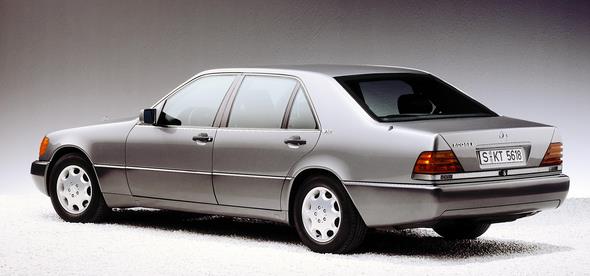
At the heart of this technological miracle was an electronic transmission control unit which adapted gear-shifting rapidly and automatically to any given driving situation and which continuously exchanged data with the electronic engine management system.
In addition to these pioneering innovations, the new automatic transmission was also much more compact and lighter than were comparable five-speed transmissions.
To further improve fuel consumption and reduce harmful emissions the engines underwent more revisions. The two V8 engines were given a modified crankshaft, an optimized valve control system, lighter pistons, dedicated ignition coils for each cylinder and an improved electronic engine management system of the Motronic ME 1.0 type which integrated a hot-film air flow sensor in the place of the hot-wire air mass sensor.
Modifications to the V12 engine were less extensive and affected only the arrangement of the ignition coils and the electronic engine management system.
Thanks to the various modifications to the engine and the introduction of the new automatic transmission, fuel consumption for the V8 and V12 models could be cut by seven percent on average without any loss in output, and exhaust emissions by over 40 percent.
September 1995 also saw the introduction of the Electronic Stability Program ESP® as an option for all S-Class models with eight-cylinder engines, a system that helped the driver to correct driving errors by automatically counteracting momentary instability by sensor-controlled brake intervention, thus contributing to active safety.
ESP® was introduced as standard equipment in both twelve-cylinder models. To begin with it was available as an option with the S 420 and S 500. Then from December 1996 on, ESP® was available with all models when ordered with automatic transmission.
In addition to the model refinement package outlined above and presented at the IAA in Frankfurt, in September 1995 a new S-Class variant was premiered: The S 600 long-wheelbase Pullman.
Developed as a new official representational saloon and equipped with special protection technology, this vehicle continued a long Mercedes-Benz tradition.
The special-production car measured 6,213 millimetres in length and was therefore exactly one metre longer than the long-wheelbase S 600.
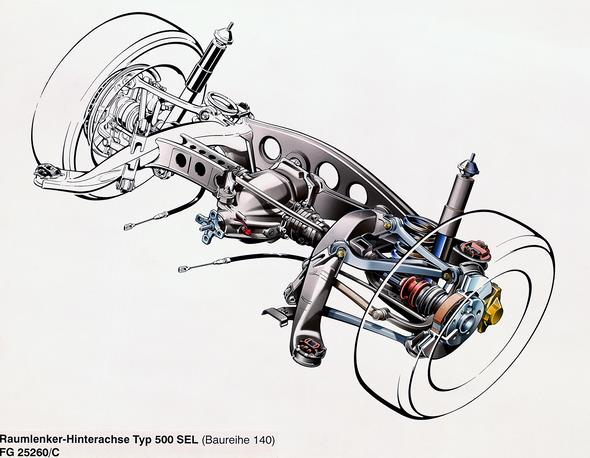
The extra length served to benefit the rear passengers, comfortably accommodated on seats arranged in vis-à-vis format and separated if required from the driver’s compartment by a glass partition.
The Pullman saloon in the W 140 series was also available as both S 500 and S 600 without armouring. The first units of both variants were produced in August 1996.
In line with tradition, the normal five-seater saloons in the S-Class were also available as armoured versions – with a choice of 5.0-liter V8 or 6.0-liter V12 engine.
Production of both these armoured models began in February 1992, one year after main production start-up for the W 140 series.
Further improvements
In June 1996 the S-Class underwent further improvements. Now the five-speed automatic transmission with torque converter lock-up clutch and electronic engine management was also available for the six-cylinder models – as an option on the S 280, and as standard on all other models.
At the same time the ASR acceleration skid control system also became part of the basic equipment on the six-cylinder models.
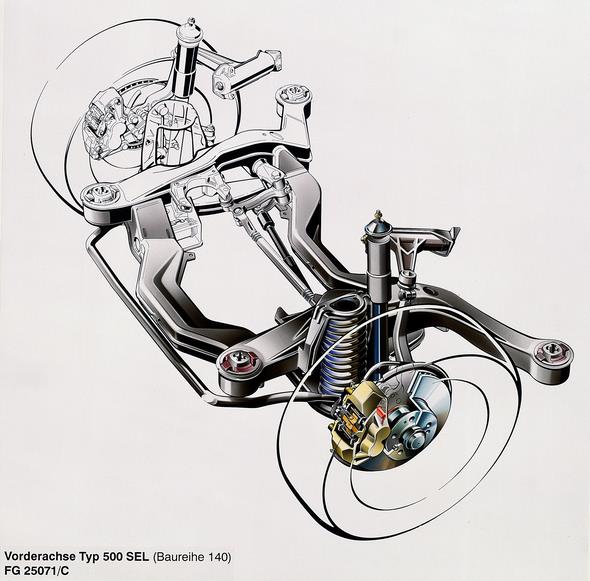
Other innovations to note included sidebags as standard for driver and front passenger on all models, seat occupancy sensors to operate the front passenger airbags, an “intelligent” rain sensor that controlled the wiper interval in accordance with the volume of spray on the front windshield, and luggage nets in the trunk and front passenger footwell.
Xenon headlamps with headlamp wash/wipe system and dynamic headlamp range adjustment were available as optional equipment.
Externally, too, the S-Class saloons had undergone slight modifications when they were presented in June 1996; immediately apparent were the satin-finish detachable body components, now painted in the colour of the car rather than as previously in the contrast colour.
Apart from these detail improvements described above, in June 1996 a model change in the S-Class came into effect: The S 350 Turbodiesel was replaced by the S 300 Turbodiesel.
In contrast to its predecessor, the new diesel model offered a turbo engine with four-valve technology and intercooling. Engine output was 20 kW (27 hp) higher, at 130 kW (177 hp); torque was increased by 20 Newton meters and available over a broad range of engine speeds; exhaust emissions and fuel consumption were much lower as a result of optimized combustion.
The S 300 Turbodiesel came as standard with the electronically controlled five-speed automatic transmission.
From December 1996 the S 280 and S 320 models with automatic transmission were also equipped with the Electronic Stability Program ESP®.
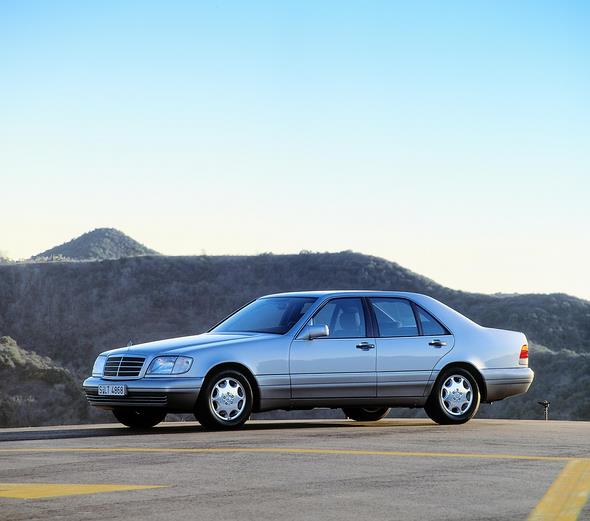
At the same time a new innovation had its world premiere as an additional active safety feature – Brake Assist BAS, which was fitted as standard in all R 129 and W 140 models from December 1996.
Brake Assist (BAS) was able to recognize emergency braking situations and if required to boost brake power to a maximum more quickly than was previously the case, thus shortening stopping distances considerably.
A landaulet for the Pope
In March 1997 a further variant in the W 140 series was produced: The long-wheelbase S 500 landaulet, a one-off vehicle for Pope John Paul II.
The landaulet soft-top was operated electrohydraulically to afford a clear view of the Holy Father seated on his centrally positioned thronal seat. It was also equipped with folding seats for two attendants.
At the Paris Motor Show in September 1998, the public was introduced to six S-Class saloons from the W 220 series, which now succeeded the W 140 series after a period of seven and a half years.
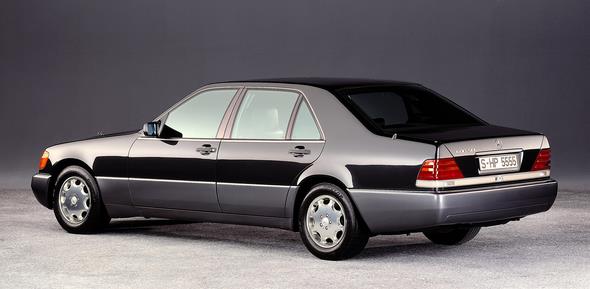
Series production of the 140 models at the Sindelfingen plant was stopped at this point, and only the armoured versions and the Pullman saloons continued to be built.
By September 1998, a total of 406,532 W 140 series saloons were produced, of which 28,101 units had diesel engines.
At the start of its career and particularly in Germany, the largest ever S-Class did not have an easy time – despite the car’s undeniable qualities.
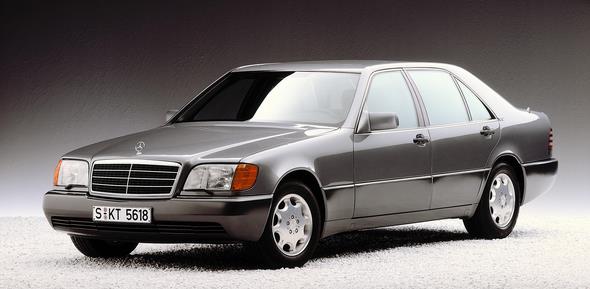
A valedictory appeared in the Frankfurter Allgemeine Zeitung of August 25, 1998 under the headline: “The end of the good patriarch. Sentimental farewell: The S-Class was always better than its reputation.
” This obituary written by Wolfgang Peters included the lines: “…No other car offered such ride comfort and suspension, and no other car in this size category could be driven in such safety and with such agility at the same time.
The S-Class was a giant that had been taught to dance on the points of its toes. […] The new S-Class promises to be lithe and lissom: Some of us are missing the fatter version already.”
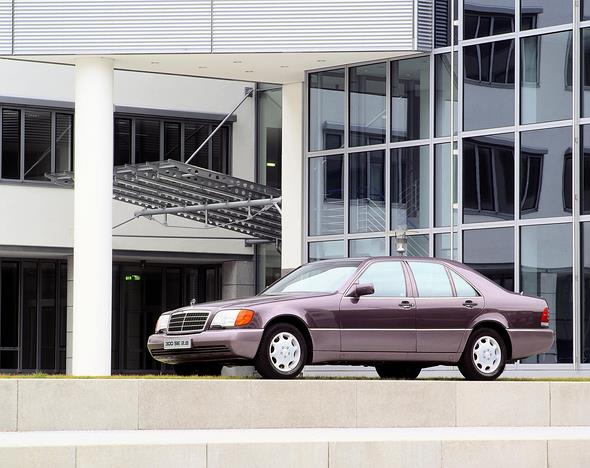
The W 140 series in the press
Auto, Motor und Sport, Germany, volume 7/1991, on the Mercedes-Benz 600 SEL:
“With dimensions such as these, there is little to be said about the interior: The sense of space is almost wasteful, even more so in the rear than in the front, since the opulent height in the rear is particularly apt for giving the impression of riding in a mobile living room. … It would not be wrong here to describe this as the world’s finest car – any less would be to do Mercedes an injustice.”
Auto, Motor und Sport, Germany, issue 12/1991, on the Mercedes-Benz 300 SE:
“The size and weight of the new S-Class has become almost a political issue. But in truth, on driving these factors are less noticeable than one might expect. On the contrary, it is surprising how light and easy this mighty automobile is to drive even along narrow and winding country roads.”
Road & Track, USA, December 1991, on the Mercedes-Benz 500 SEL:
“At a 70-mph cruise, the 500 SEL has the honour of being the quietest car we have ever tested – a mere 64 dBA. Helping in the serenity department is double-pane side glass, with dehumidified air sealed between the panes. It’s said to prevent fogging as well as absorb noise, and no, Mercedes assures us, it isn’t bulletproof, a question some ask when they see its thickness.”
mot, Germany, issue 13/1991, on the Mercedes-Benz 400 SEL:
“With the new S-Class Mercedes once again demonstrates its claim to have invented the automobile and to build the world’s best car. When applied to the 400 SEL, one is forced to admit the claim is justified.”
Mercedes-Benz S-Class, W 220 series (1998 to 2005)
At the Paris Motor Show in September 1998, the public was introduced to six S-Class saloons in the W 220 series, which succeeded the W 140 series after seven and a half years.

It was almost delicate by direct comparison, for somehow the designers succeeded in accommodating the same feeling of space and presence within a much more slender body.
But unchanged was the same aspiration to set the trend for automotive design as a whole. On its debut the new S-Class displayed over 30 technical innovations, including the DISTRONIC autonomous intelligent cruise control, navigation system with integrated congestion warning and automatic cylinder shut-off in the V8 engine of the S 500.
And later came the pioneering safety system PRE-SAFE®.
When the W 220 was presented in 1998, Dr. Dieter Zetsche, then Board Member at Daimler-Benz AG with responsibility for Sales, made the comment: “In total, the new S-Class derives its desirability from the classic virtues of a Mercedes-Benz – by associating reason and emotion.
Thanks to its familiar strengths of comfort and safety it guarantees a sense of calm, and with its elegant design and well-balanced driving characteristics it embodies sheer enjoyment.”
When the W 220 series was launched, there were initially two body and three engine variants. The customers were given a choice between the saloon with a short wheelbase (2965 millimetres) and the model with a wheelbase 120 millimetres longer (3085 millimetres).
For each body there were three engines available. The S 320 had a 3.2 litre V6 engine (165 kW/224 hp); the S 430 a V8 engine which delivered 205 kW (279 hp); and the V8 in the top-of-the-range S 500 provided 225 kW (306 hp).
All three units offered optimum combustion thanks to their three-valve technology and dual ignition. Dual ignition also made it possible to increase the volume of exhaust gas fed back into the engine, with a consequent beneficial impact on emissions.

Automatic cylinder shut-off
The newly developed automatic cylinder shut-off turned the eight-cylinder S 500 temporarily into a four-cylinder – a feature which had a dramatic impact on fuel consumption without compromising on smoothness, torque or quietness.
To put that into figures, when four of the eight cylinders were shut off under partial load conditions, NEDC fuel consumption (New European Driving Cycle) for the S 500 was cut by an average of seven percent.
Indeed, thanks to the automatic cylinder shut-off even greater economies were to be achieved depending on driving circumstances: At a constant 120 km/h gasoline consumption fell by about 13 percent, and at a constant 90 km/h by as much as 15 percent.
The automatic cylinder shut-off was activated whenever the V8 engine was obliged to deliver only a fraction of its output and torque – for example, in city traffic, on trunk roads or for steady motorway driving at moderate speed.
At the Geneva Motor Show in 1999, a new family member, the CL coupe, celebrated its world premiere. It featured for the first time as standard the innovative suspension system Active Body Control ABC, which represented a hitherto unachieved optimum balance of sportiness and comfort.
A system based on signals from sensors and using special hydraulic cylinders on the axles, ABC compensated almost entirely for any rolling and pitching motion of the body when moving off, cornering or braking.
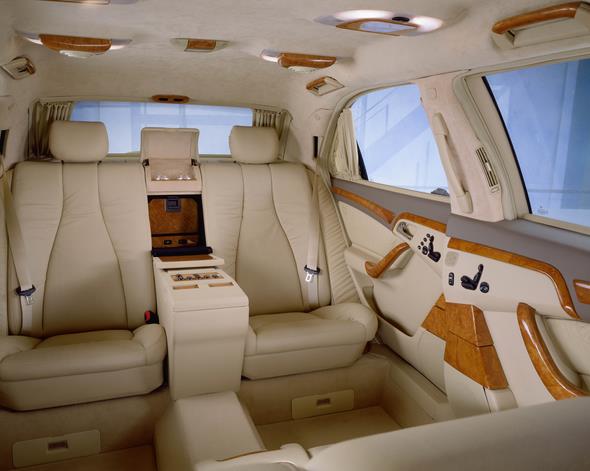
Two engines were available: The CL 600 had the twelve-cylinder unit with 270 kW (367 hp), and the CL 500 the 225 kW (306 hp) V8 engine.
The IAA Frankfurt Motor Show in 1999 presented the twelve-cylinder saloon S 600 and the six and eight-cylinder diesel versions, the S 320 CDI and S 400 CDI. The other engines were revised.
The S 600 was only available as a long-wheelbase version. The newly developed V12 engine was the same as the unit used in the CL.
It was fitted as standard with such technical innovations as automatic cylinder shut-off, phased-control dual ignition, three-valve technology and AC ignition, and delivered 270 kW (367 hp) with maximum torque of 530 Newton meters at 4100/min.
That took the S 600 from 0 to 100 km/h in 6.3 seconds and gave it an electronically limited top speed of 250 km/h.
The S 320 CDI was powered by an advanced six-cylinder unit with direct diesel injection, VNT turbocharger (Variable Nozzle Turbine) and four-valve technology.
It generated 145 kW (197 hp) and at 1800/min developed maximum torque of 470 Newton meters. In the new European driving cycle the six-cylinder saloon used just eight litres of fuel for every 100 kilometres, giving it a range of almost 1,100 kilometres with a full tank (88 litres).
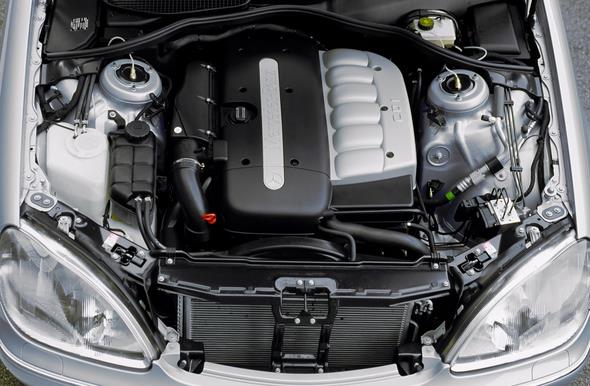
A bi-turbo diesel
The V8 engine with bi-turbo system in the S 400 CDI marked a further milestone in the long history of Mercedes-Benz compression-ignition engines.
From a displacement of 3,996 cubic centimetres the CDI eight-cylinder unit developed 175 kW (238 hp) of output at 4000/min. Maximum torque – an impressive 560 Newton meters – was available much earlier, at between 1800 and 2600/min.
As for fuel consumption, the advanced diesel injection engine here proved far superior to comparable gasoline engines, with a value of just nine litres per 100 kilometres (NEDC combined consumption).
All W 220-series engine variants were equipped as standard with five-speed automatic transmission that also featured two driving modes, slip-controlled torque converter lock-up and an advanced lightweight design.
This meant that even the transmission made a major contribution to fuel economy. Daimler-Benz had taken operation of the five-speed automatic system to a new stage of development with its so-called ‘touch shift’ function: While it was still possible to select the positions “P”, “R”, “N” and “D” as usual, in position “D” the driver could engage driving stages 4 through 1 by gently pushing the shift lever to the right or left.
The manual gear selection was monitored by the transmission electronics, which only carried out shift commands that lay in the permitted engine speed range.
A display in the instrument cluster kept the driver informed of the current shift position.
The W 220 series made advances in all areas of automotive design.
As such, the W 220 series weighed over 300 kilograms less than its predecessors with the same equipment options – one of the most important conditions for reducing fuel consumption and increasing agility.
Thanks to lightweight design, exemplary aerodynamic efficiency (drag coefficient Cd = 0.27) and advanced V6 and V8 engines, the W 220-series vehicles saved somewhere between 12 and 17 percent on fuel, depending on the specific engine, over predecessor models.
In spite of having a lighter body the designers also managed to further optimize protection for vehicle occupants.
Window airbags came as standard and stretched from A-pillar to C-pillar, sidebags were fitted to all doors and great attention was paid in the area of body design to reduce the risk of injury in the event of a side impact.
Other standard safety innovations included belt force limiters for front seats and outer seats in the rear, front passenger airbag with two-stage gas generator and an automatic front passenger/child seat recognition system.
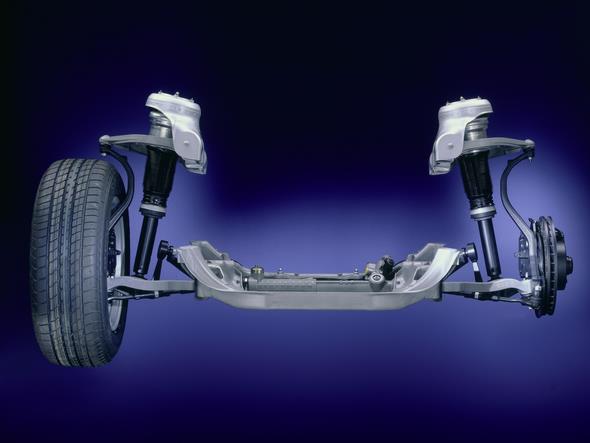
High level of ride comfort
With its electronically controlled air suspension to front and rear axles, the S-Class opened up a new dimension in ride comfort.
Natural body vibrations, an important factor for suspension comfort, were as much as 14 percent lower than the value for the previous top-of-the-range Mercedes-Benz.
AIRMATIC came as standard, and combined the air suspension and Adaptive Damping System ADS into a system that automatically made adjustments to the shock absorbers to take account of the condition of the road surface, load or driving style.
As a result the saloon was able to offer a high degree of agility and cornering dynamics – important factors for driving pleasure at the highest level, and supported also by the newly developed four-link front suspension.
The Electronic Stability Program ESP® was also a standard equipment feature in the S-Class.
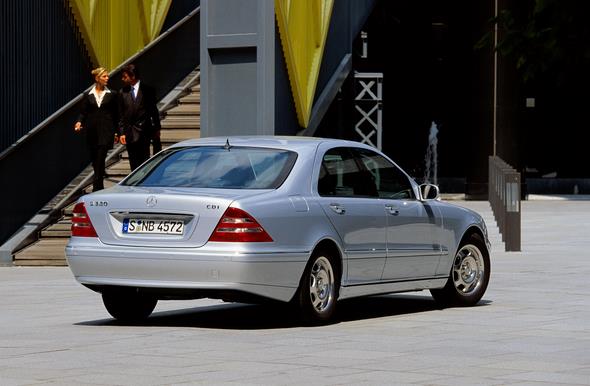
And with the autonomous intelligent cruise control system DISTRONIC, available from early 1999, ventilated luxury seats and the innovative multi-contour backrest with automatic massage function, driving in the S-Class became an even more relaxing and stress-free experience.
An innovative Cockpit Management and Data System – in short: COMAND – combined the functions of car radio, CD and cassette player, sound system, telephone, navigation system, TV receiver (available from early 1999) and the clock times, thus offering the epitome of user-friendly operation.
Moreover, buttons on the steering wheel of the new S-Class enabled the driver to program individual settings and call up various items of journey data.
These appeared on the clearly laid out central display in the instrument cluster. From model year 2002, COMAND was fitted as standard to all models in the S-Class, and in the top-of-the-range S 600 it was coupled as standard with the navigation system.
Model refinement of the W 220 series in autumn 2002 incorporated the 4MATIC electronically controlled four-wheel drive for the six-cylinder and eight-cylinder gasoline models.
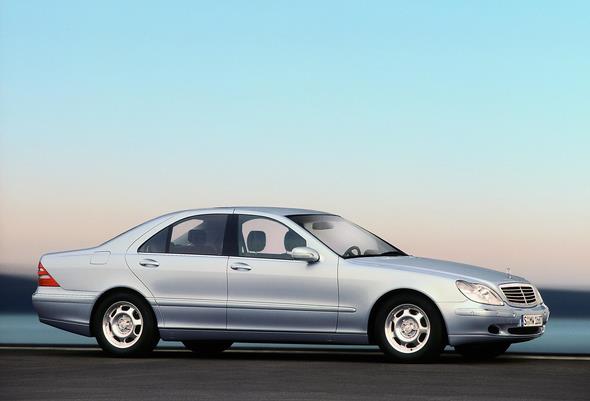
Also available as an option was the Active Body Control suspension system ABC (standard in the S 600), already used in the CL coupe, which adapted body suspension to current driving conditions in a split second.
In this way the system was able to reduce body movements appreciably, dramatically improving lateral roll of the twelve-cylinder saloon on cornering and offering a much greater level of safety in rapid evasive manoeuvres compared with cars equipped with conventional running gear technology.
New to the range was the Mercedes-Benz S 600, which put all others in the shade and deceived the competition:
the bi-turbo V12 engine developed 500 hp (368 kW) and torque of 800 Newton metres.
PRE-SAFE® prevention
Top of the list of pioneering new high-tech innovations since 2001 has been the PRE-SAFE® preventative occupant protection system, with which Mercedes-Benz launched a new era of automotive safety.
PRE-SAFE® is capable of recognizing an impending accident in advance and preparing the vehicle accordingly.
Such preventative passenger protection measures include, for example, split-second tensioning of seat belts, forcing driver and front passenger to adopt the optimum seat position ahead of an imminent collision, so that airbags can function with maximum effectiveness upon impact.
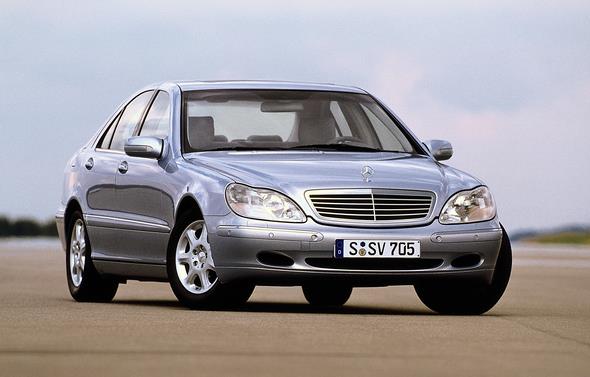
At the same time PRE-SAFE® returns the front passenger seat and electrically adjustable individual rear seats into the optimum position and automatically closes the sunroof should the vehicle go into a skid.
Discreet design modifications were also made to the visual appearance of the S-Class from model year 2003, lending even greater emphasis to the agile and elegant nature of the saloon.
One example of this was the front bumper, which now featured a new design of lower air intake that gave the body a broader and even more powerful appearance.
The radiator grille was also modified, with designers giving it greater height and positioning it at a steeper angle than before.
The most important element of the stylistic facelift, however, were the curved lines of the headlamps, which gave the saloon added brilliance as a result of their state-of-the-art clear glass lenses and high-gloss reflectors.
The innovative dynamic multi-contour seat was considered the ultimate in state-of-the-art seat design. Equipped with several air chambers that automatically inflate or deflate depending on the situation, it gave both driver and front passenger perfect side stability on cornering.
Electro-pneumatic control was the responsibility of a computer integrated into the seat, which was capable of computing data such as steering angle, lateral acceleration and road speed in a fraction of a second, in order to vary the inflation pressure and volume of the air chambers as appropriate to each situation.
In a left-hand bend, for example, the system pumped more air into the air chambers on the right-hand side of the backrest, thus improving lateral support for occupants.
Fall 2001 saw the market launch of the W 220-series Pullman variant, with a wheelbase one metre longer than that of the conventional long version.
The additional space benefited the rear passengers and allowed a vis-à-vis seating arrangement. The Pullman was available with either the 5.0-liter eight-cylinder engine (225 kW/306 hp) or the V12 unit (270 kW/367 hp).
The basis of the vehicle was a reinforced body shell and modified running gear.
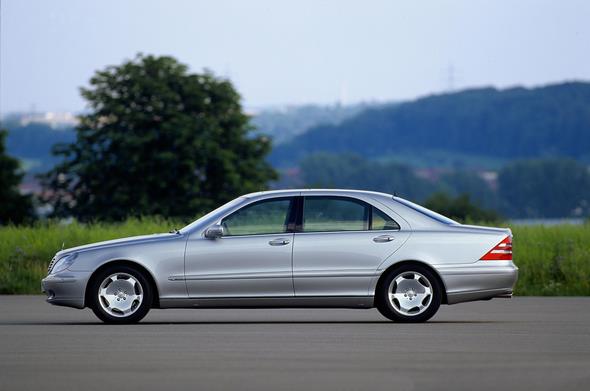
Production of the W 220 series was scheduled to end in late 2005 to make way for the W 221 series, which once again continued to set new standards – as befits the S-Class from Mercedes-Benz.
By December 2005 the Sindelfingen plant had turned out a total of 484,683 saloons from the W 220 series. The most successful model from this generation was the S 500 long version, with unit numbers of 108 823 examples.
The W 220 series in the press
Frankfurter Allgemeine Zeitung, Germany, October 13, 1998, on the S-Class:
“The saloons create a thoroughly imposing presence, despite being lighter and slightly smaller in dimensions, and they display an agility and manoeuvrability we have never before seen in this class of car. At the same time, there is a precision of wheel location and responsiveness of steering that one would otherwise normally only associate with serious compromises to ride comfort. The air suspension that comes as standard in all variants seems to turn the Mercedes saloon into a flying carpet that can recognize turbulence before it even has time to hit. Every S-Class should have that once popular sign in the rear window: Beware – boss driving!”
Auto, Motor und Sport, Germany, issue 25/1998, on the Mercedes-Benz S 320:
“Airmatic and ADS are also part of the package that gives the large saloon such manageable and nimble handling characteristics without unstable body movements. It is supported by precise speed-sensitive parameter steering, which allows the two-tonne saloon to be steered like a compact car.”
Road & Track, USA, January 1999, on the Mercedes-Benz S 500:
“In the meantime [until the S 600 arrives], the S 500 is quite a worthy flagship: quick, quiet, stable and yet commendably nimble. Whereas the previous S‑Class miraculously shrank the faster it was driven, in a sense this new one is already preshrunk; its excellent chassis dynamics evident at any speed, its comfort undiminished from that of the car it replaces.”
Auto Zeitung, Germany, issue 4/2003, in a comparative test between the Mercedes-Benz S 600 and BMW 760 Li:
“It’s hard to believe that such an engine might meet its match. But the turbocharged Mercedes V12 puts the BMW unit in the shade. The sheer power of its 800 Newton metres and 500 hp facilitates even better driving performance at low engine speeds without compromising its smooth running characteristics. Two turbochargers produce such enormous thrust that the 5-speed automatic transmission seldom needs to change the gear ratio even at very high speeds. This V12 is nothing short of sensational.”

